THE CANNON
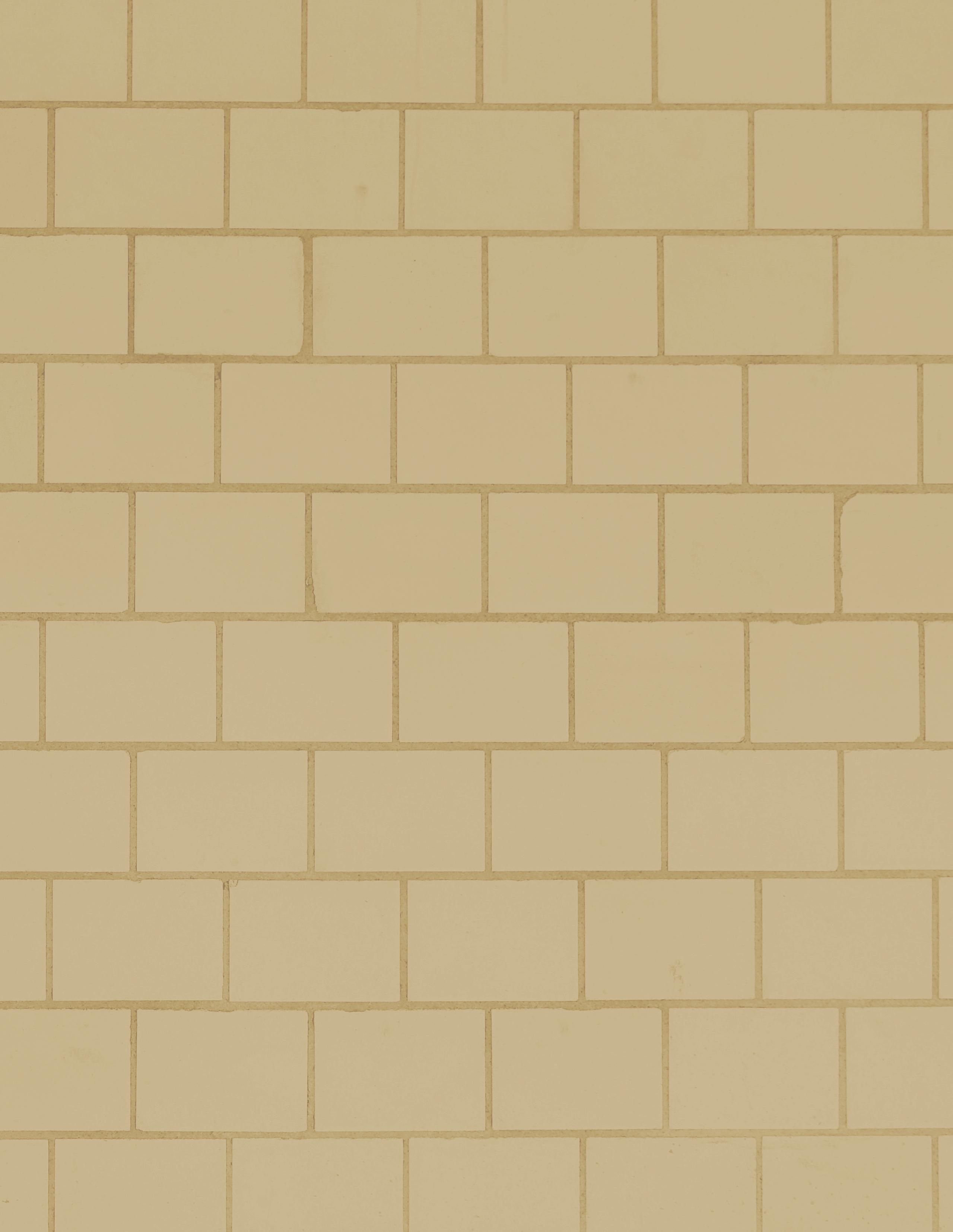
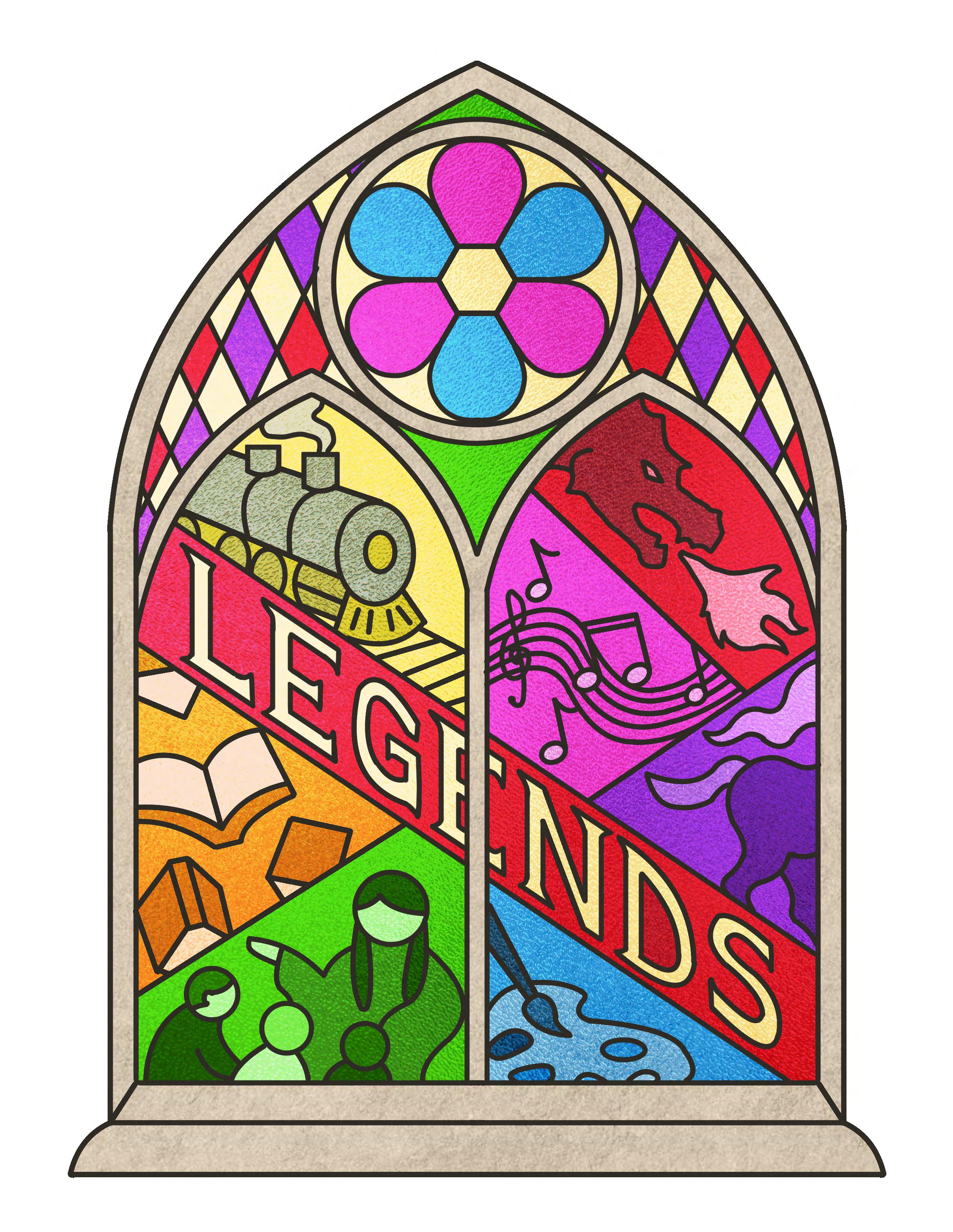



EDITOR-IN-CHIEF
Tobin Zheng
CONTRIBUTORS
writing
F!Week Loremasters
Alexis Kuri Garcia
Vedant Gupta
Sean Huang
Kaija Mikes
Anouskha Paul
Tudor Sigmund
Navin Vanderwert
Lily VanderWoude
editing
Iva Guo
Anoushka Paul
artwork
Iva Guo
Selena Li
Daniel Perry
Maiya Schmidt
recipe
Ted Pinkerton
SPECIAL THANKS
Ben Gloade
Jennifer Wu
All Solutions Printing
The Cannon is the official magazine of the University of Toronto Engineering Society
The views expressed herein are those of their authors, and do not necessarily reflect those of the Engineering Society.
Contact us at cannon@skule.ca to contribute!

Hello and welcome (back) to SkuleTM! Whether this copy of the Cannon was found nestled among the sundries of your F!rosh Kit, stacked upon a campus newsstand, or thrust into your hands by the editor himself, it is now yours to enjoy (and keep!!).
Now you might be wondering, what need does the engineering community have for a magazine? Well, I think the Cannon serves two functions. One, to create snapshots and archives of student culture. This issue of the Cannon is about Legends— from stories and traditions to people who left an impact on the world. Future generations can access old Cannons for a glimpse into what life was like today—not only within Skule, but also the world at-large. Why did we choose to write about these things? What was important to us at these times?
The second purpose of the Cannon, which is perhaps more immediate and wide-reaching—it creates connections in the community. Skule can seem like a huge place, but it really isn’t so big. Every contributor to this magazine, myself included, is just another engineering student who has faced ordinary challenges such as getting to class on time, studying for midterms, or finding a Pit table to have lunch at. Having a place for students to share their passions beyond engineering allows people to both appreciate the diversity of the student body and relate to those they share things in common with. As you read through the Cannon, I hope you find glimmers of familiarity or inspiration here and there, finding a little bit of connection to other students here.
However, the Cannon is far from the only way to find belonging at Skule. In fact, there are so many different places to be involved that it can get overwhelming. There are opportunities everywhere you go. Dates and times will pop up on your social media feeds, in your email inbox, and on posters put up around buildings. But if anything at all piques your interest, I urge you to show up. Convince a friend to come with you if you’re afraid to go alone. You never know if going to that one thing will change the course of your path here at Skule.
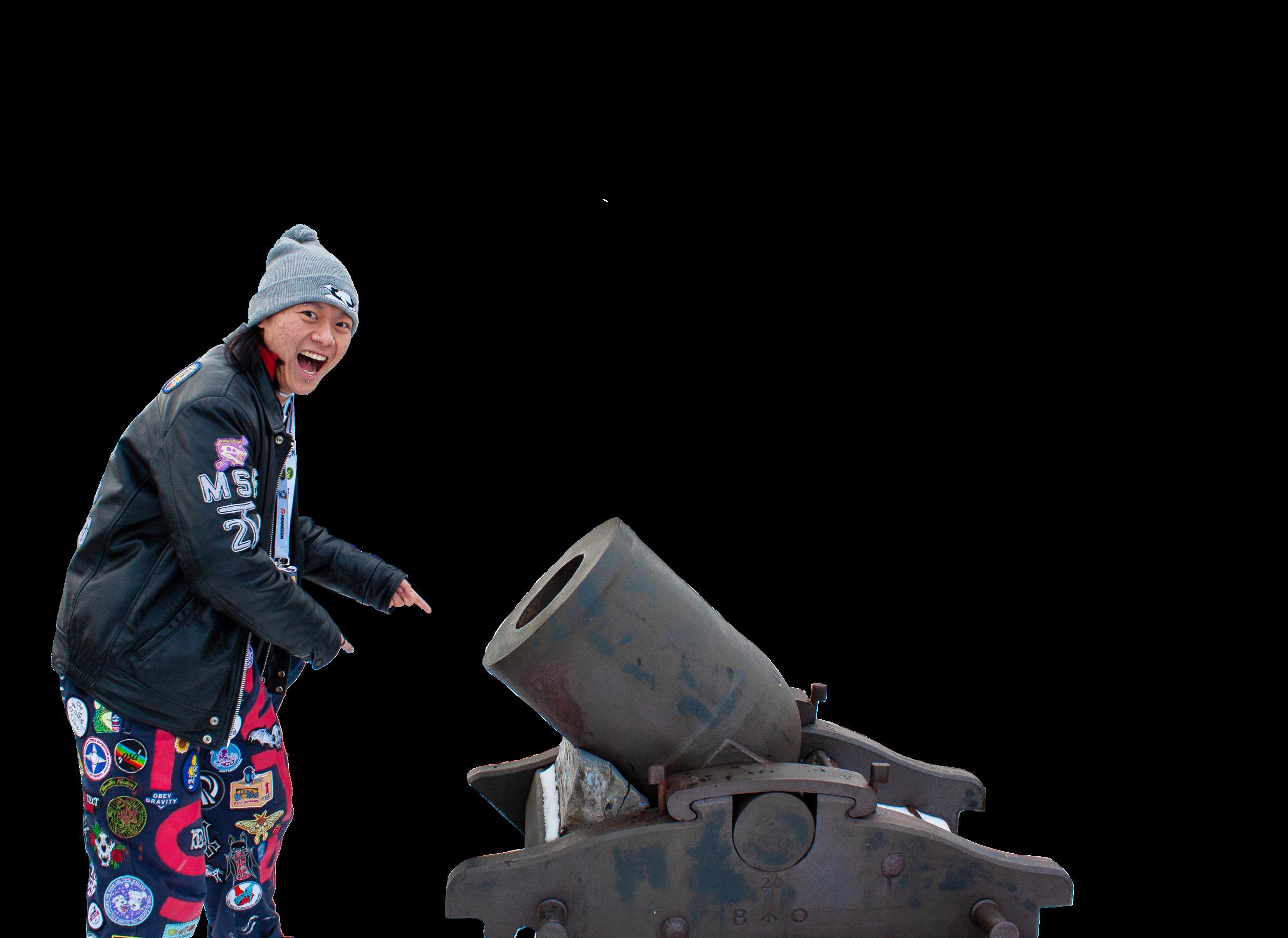
If you’d like to contribute to the Cannon, follow us on Instagram at @cannon.mag to find out about idea meetings and publishing timelines, and to join our Discord! Also, never hestitate to DM on Instagram or email cannon@skule.ca if you have any questions! Just because we’re Skule’s “serious” publication doesn’t mean we’re not fun!
Lily VanderWoude and Vedant Gupta
Greetings, traveler. We are the Mystic Elders, known to the modern world as the Co-Orientation Chairs. Within the role designated upon us and our years of study, we have gathered legends and stories from the mystical realm known as SkuleTM. We are here to share the story of the Week of F!rosh from 2T1.
Many years ago, a horrid curse known as COVID-19 spread amongst the inhabitants of the realm. This did not prevent the Week of F!rosh from occurring. However, the Week looked different than presenttimes. Several of the traditional revelries were accessed using a network portal, to be joined from the Nut of Chest, or wherever else one may have settled. Although it contrasted the grand revelries of years past, the charm of the Week still held true.
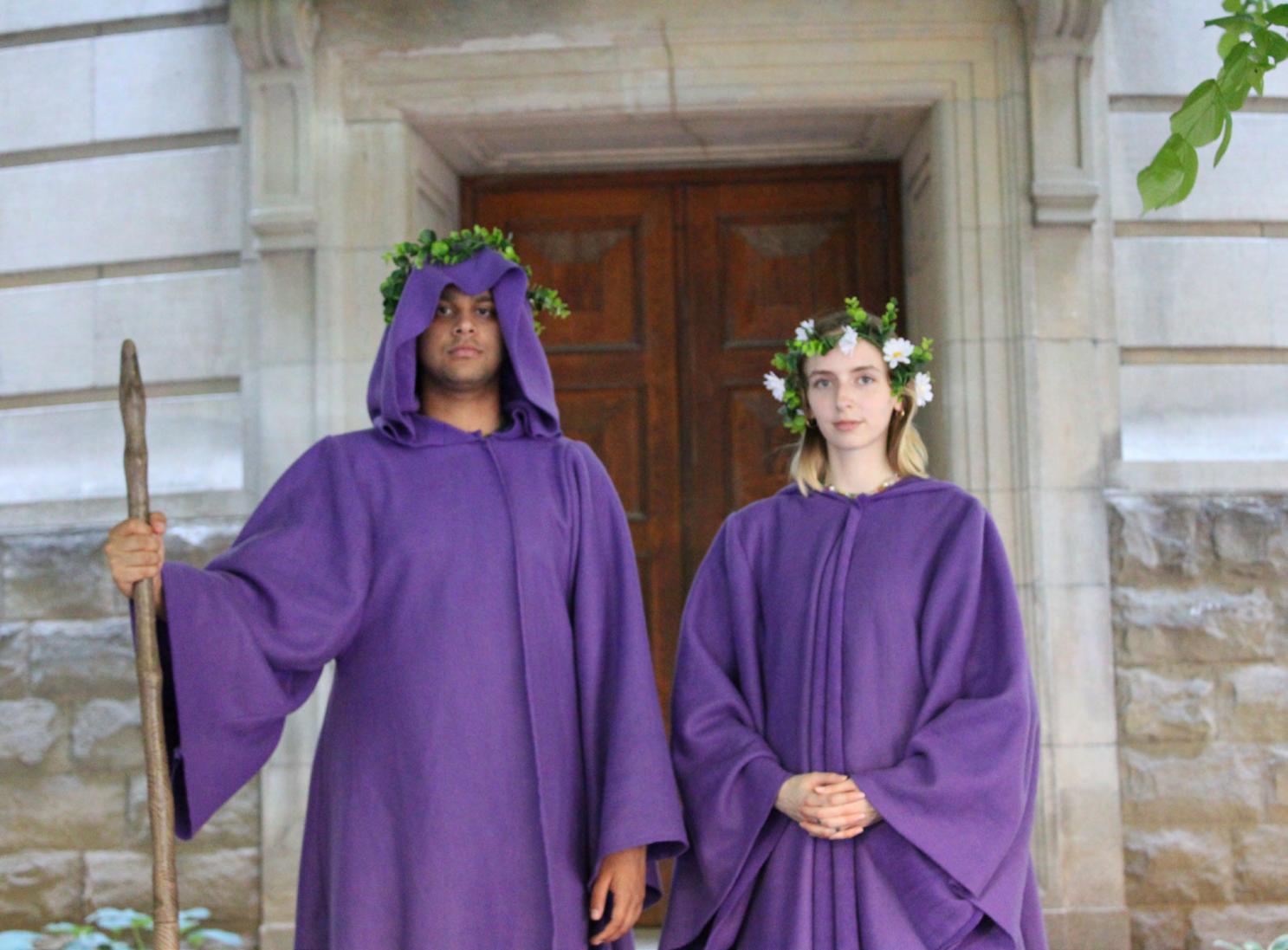
On the morning of the first day of F!rosh Week, I witnessed Matriculation, the traditional opening ceremonies of the Week, over a virtual portal. Confounded, wearing a hardhat of yellow, I took the Hardhat Oath, only by witness of my dormitory companion in the Nut of Chest. After the morning events, experienced in near isolation, it was time for what was titled “The First-Year Undergraduate Quiz.” Bewildered, unprepared and fearful, I joined a call over the portal of Zoom to write said evaluation.
On the second day of F!rosh, I awoke early, as this day I was removed from confinement. I clothed myself in a yellow shirt and covered my face to protect myself from the forsaken curse spread through the air. I left the Nut of Chest with a mass of those like me, those entering their first year of study within Engineering. As I made my way to the center of the realm, I recall feeling a sense of excitement. I met with my group, titled “Theta”. The members of which were to be my companions for the adventures the day held. I was coated in a magic potion, which dyed my skin the colour of purple. I learned the Dance of the Engineers and the Cheer of Godiva’s Hymn. As the day progressed, I made acquaintance with those in different disciplines of studies. By the end of the day, I no longer possessed a voice, and I was exhilarated. I returned to the Nut of Chest with the realization that the SkuleTM realm held endless possibilities.
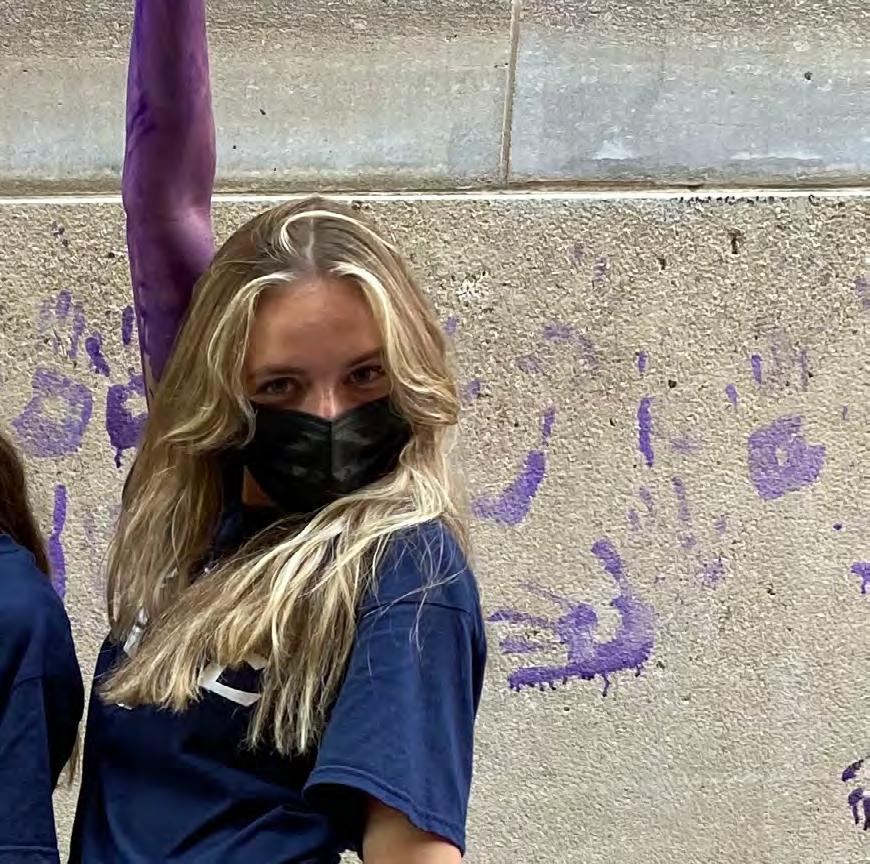
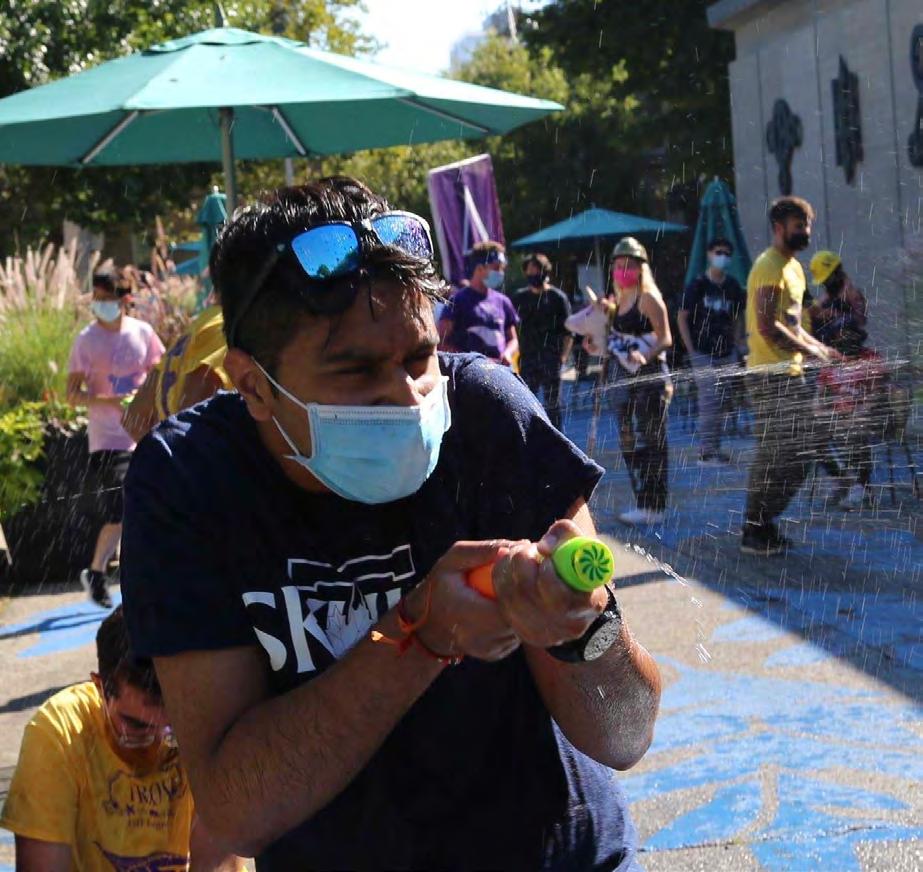
Hello, we are the F!rosh Week Loremasters, and our job this past summer has been to put a fantastical twist on Skule history to fit the enchanted vibe of this year’s F!rosh theme. While working on this project and digging into Skule history and traditions, we’ve discovered a lot of legends in Skule and honestly, they already seem pretty unreal.
There are a ton of legends built into
superstitions that threaten to curse you (like what happens if you wear someone else’s hardhat), and other traditions that are maybe just for fun, like telling the Ultimate F!rosh to jump up and down. These legends are an important part of Skule culture, but where do they come from?
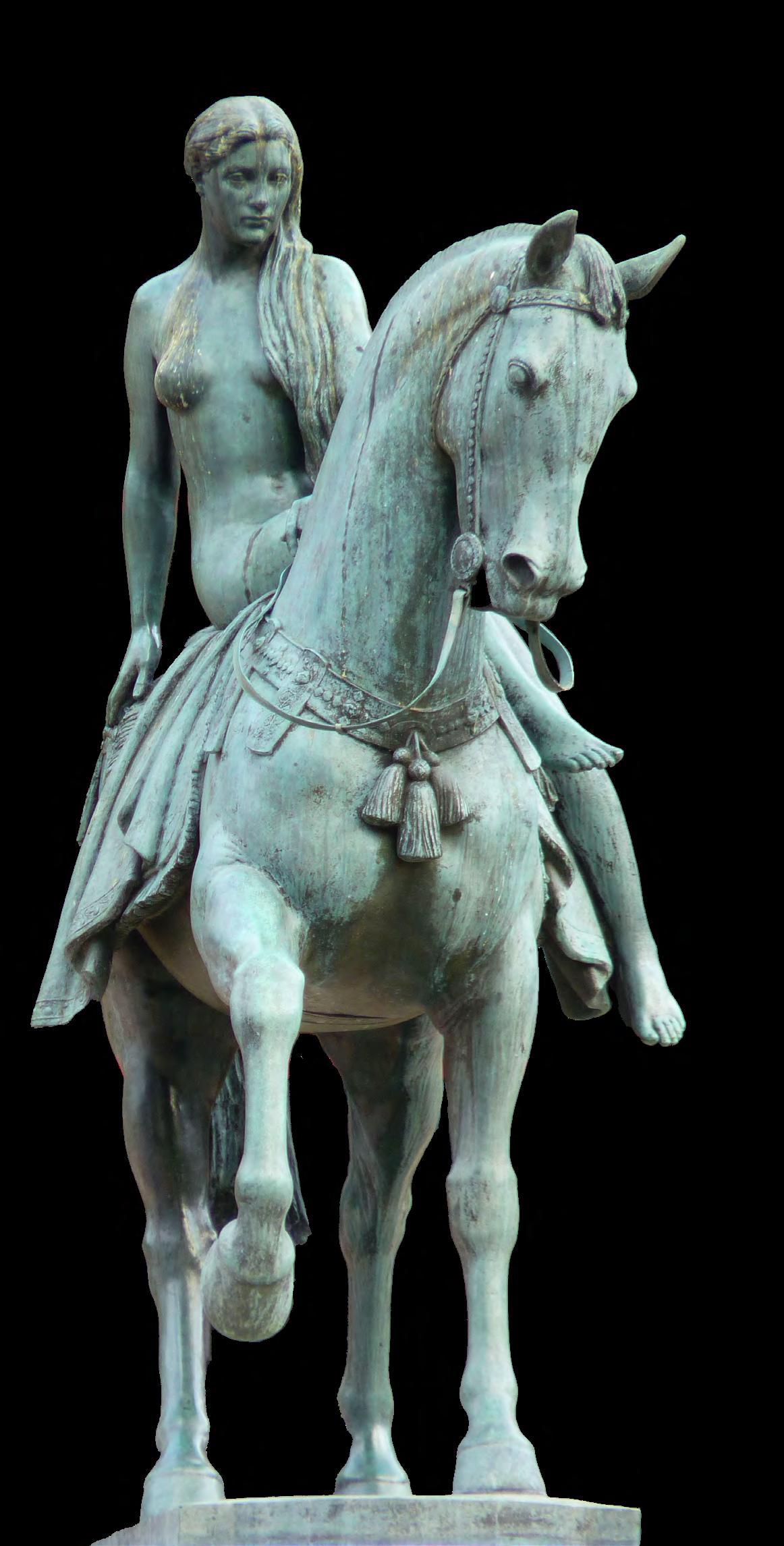
How does any legend or myth continue to live on? By sharing them with younger generations. For some myths like bedtime stories or cautionary tales, this may be accomplished when parents or grandparents tell children these stories for entertainment or as a lesson. By passing stories from generation to generation, the tales are remembered for further decades each time they’re
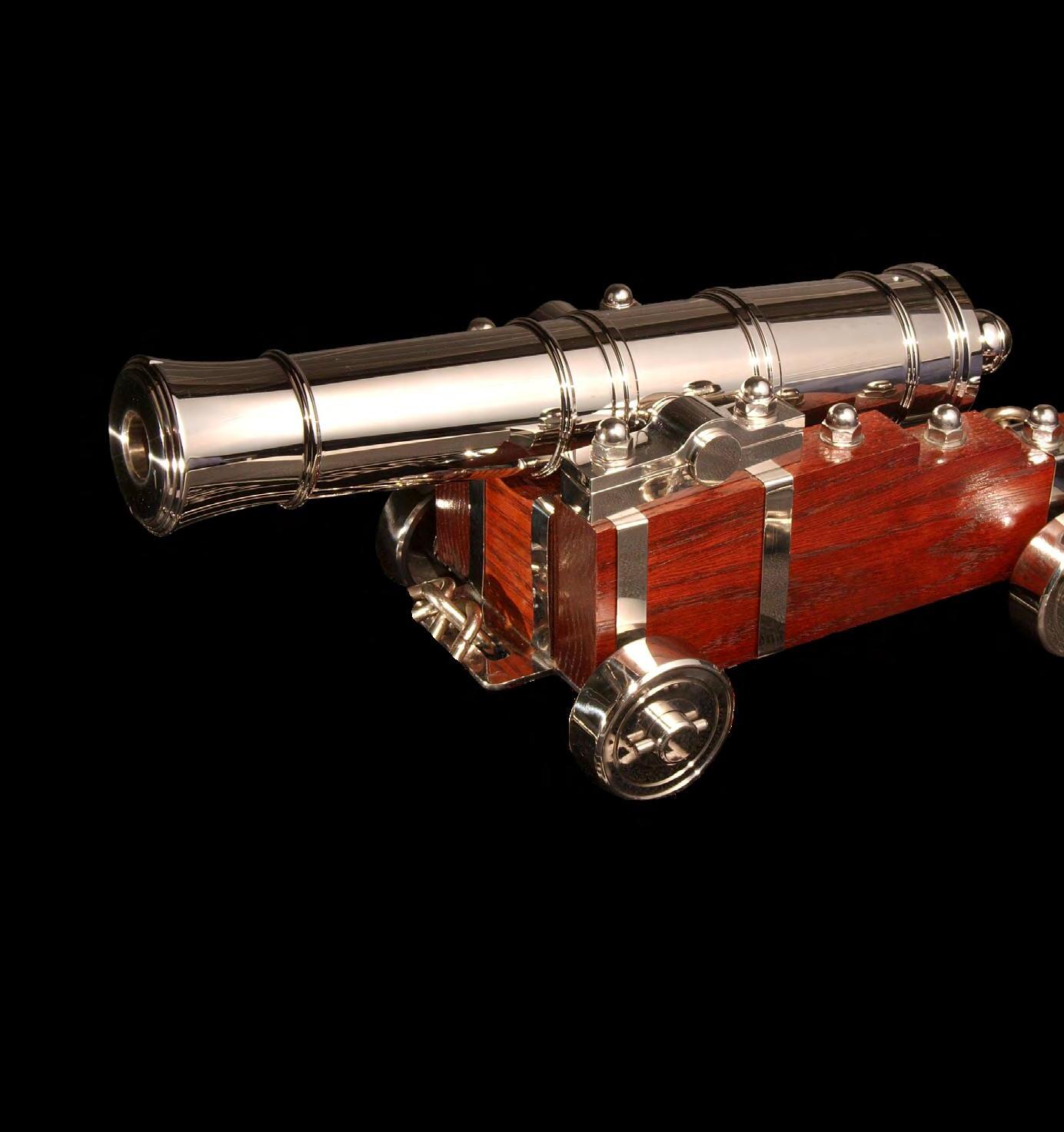

Here in Skule, a generation is effectively only one year of students. When September comes around and a new group of first-years arrive, upper-years tell them about the history and traditions of Skule that they have learned. When school was entirely virtual over the pandemic, a lot of student traditions were lost as fourth-year students graduated without having a chance to share their knowledge with younger students. Many Skule legends could have been lost during those couple of years—that kind of
So, why is it important to tell stories? Well, for practical reasons, sharing experiences with newer generations of students is really useful! Giving tips about how to do well in courses, sharing study strategies, and writing transition reports for club positions can help others save time and
be stressful and feel isolating. Silly student traditions are essential because they bring people together, create shared experiences, and build a sense of community. Traditions make people feel like they’re a part of something bigger than themselves, and connect them to past generations of students who have been in the same place.
We’re involved in F!rosh Week because our experiences in various clubs and participating in different traditions in Skule have made us want to pass these myths and legends on to new generations of students. Over the many decades of the Engineering Society, this really cool and unique place has been built. It’s our hope that Skule culture may carry on and continue to welcome more people into the community— helping them make friends and enjoy their time in university.
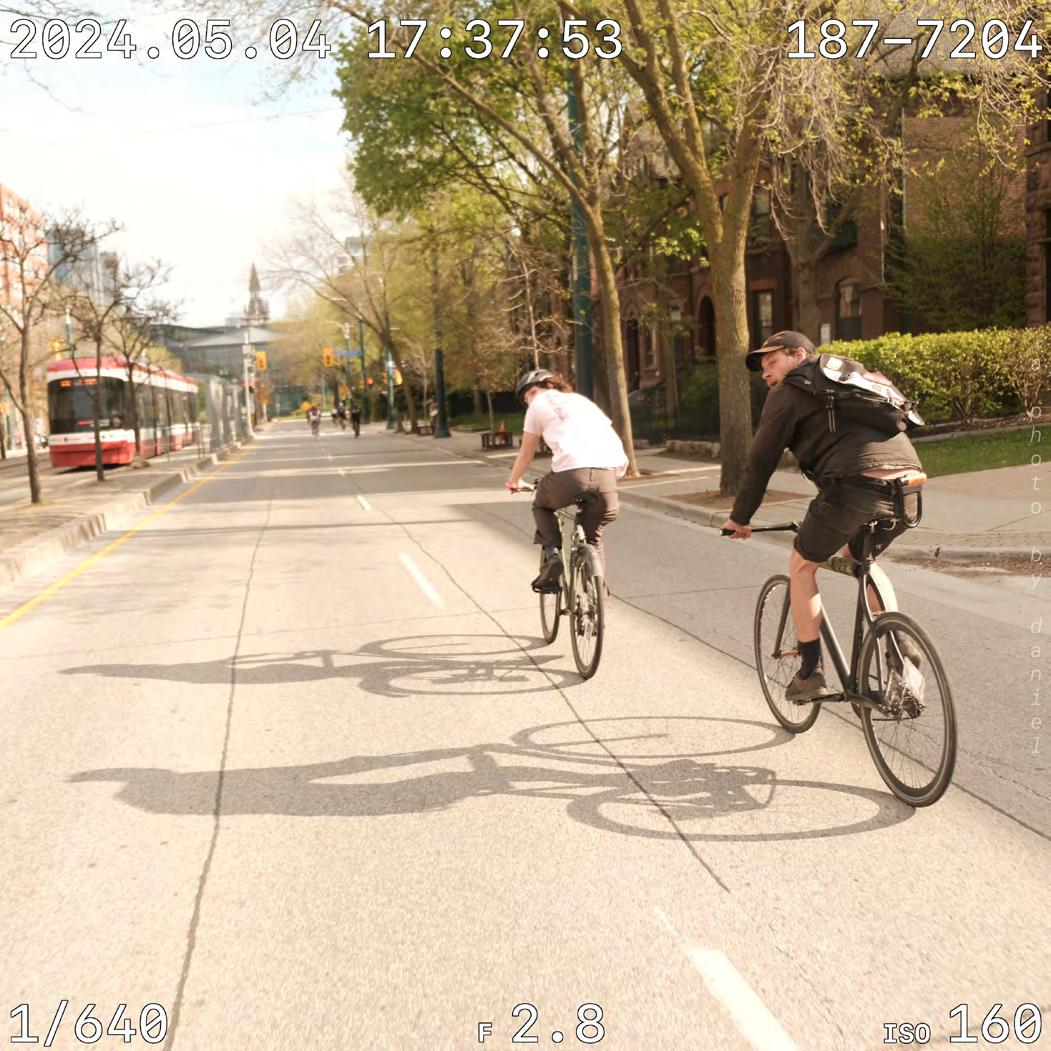
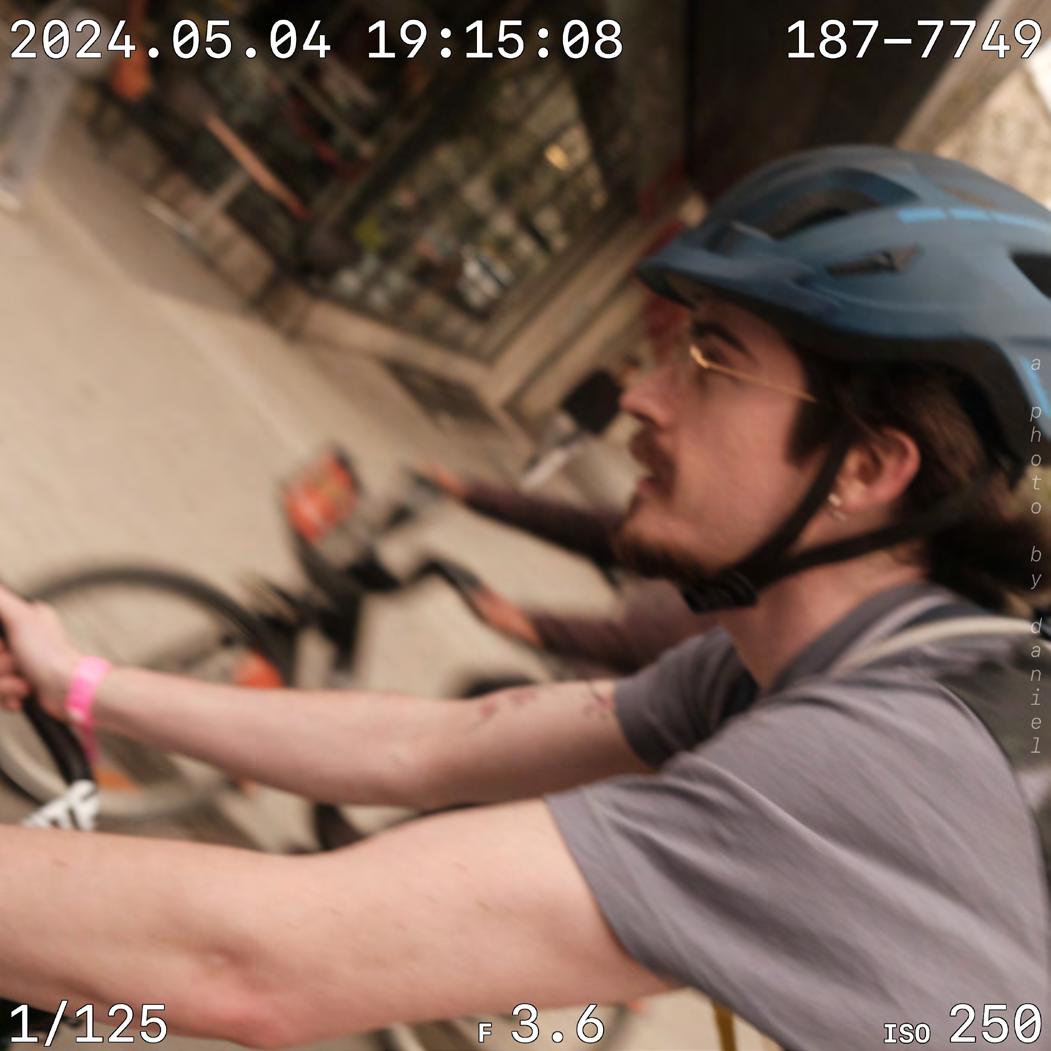
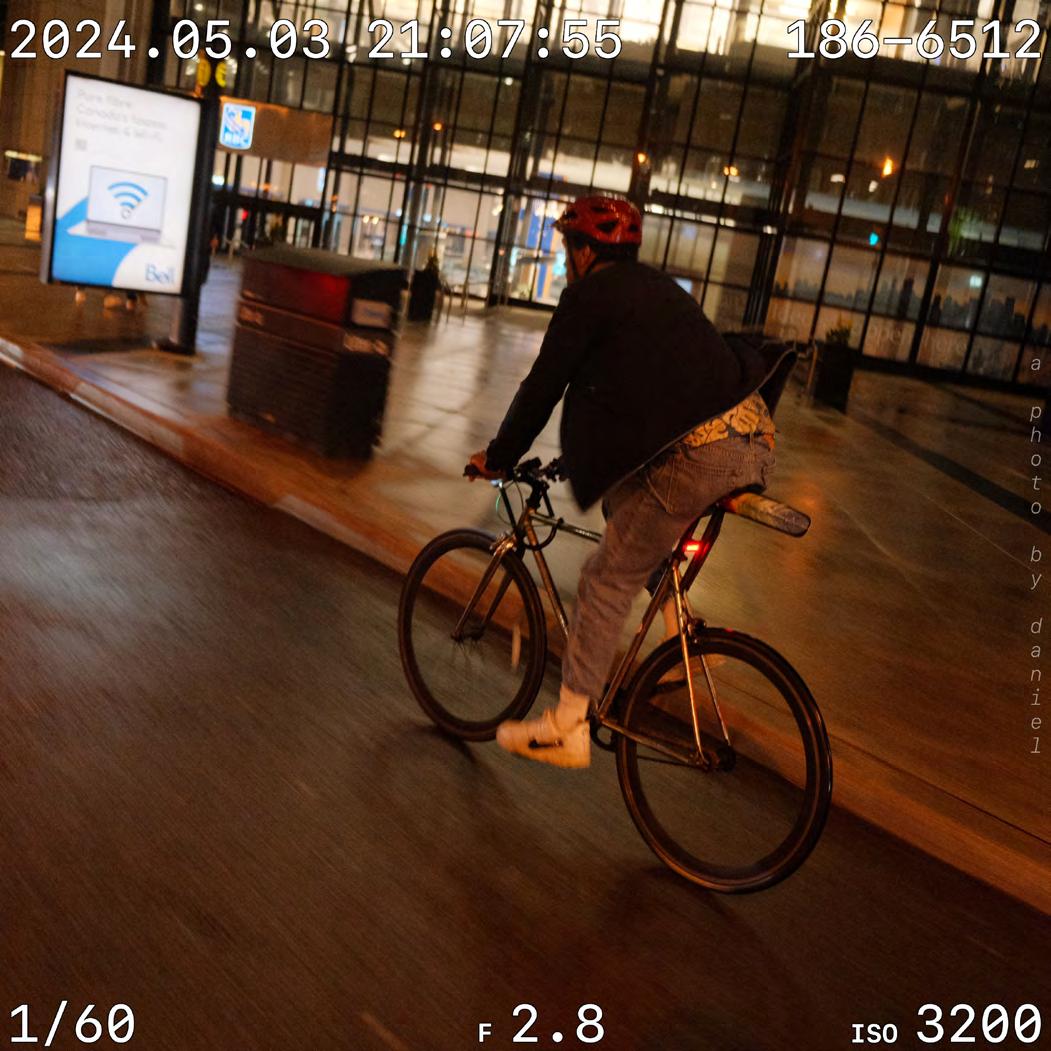
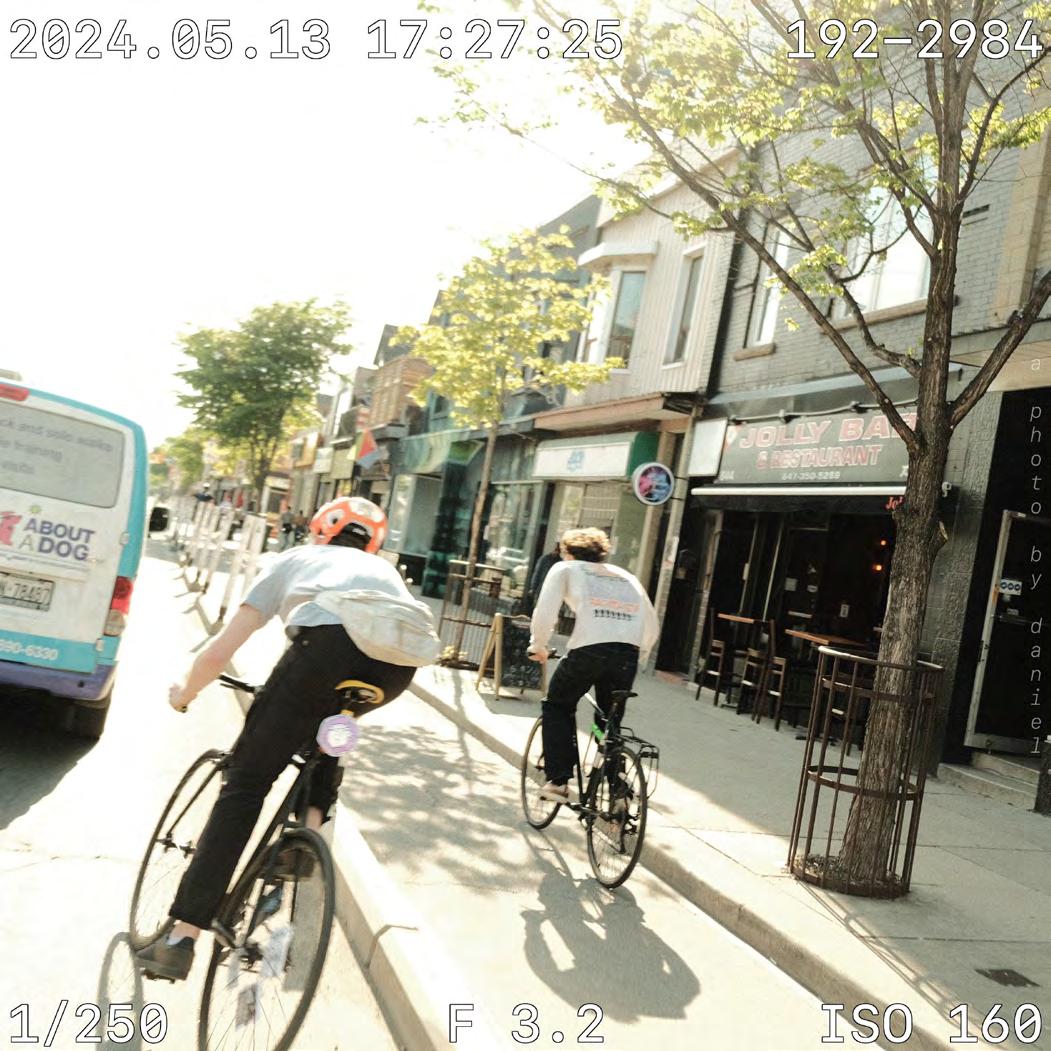
Anoushka Paul
To my silent warriors,
For those who dwell where shadows trace, Whose smiles have dimmed, their voices lost, For hearts that ache with wounds unnoticed, This poem’s for you, for the night’s still young.
To all the souls, young and grown, Whose battles are fought in isolation, Whose tears stain nights and footprints fade, You’re stronger than you may ever know.
For those who mask their scars with poise, Whose pain is camouflaged with reality’s haste, Hold onto your truth, let it be your light, For you’re a legend for what’s tomorrow.
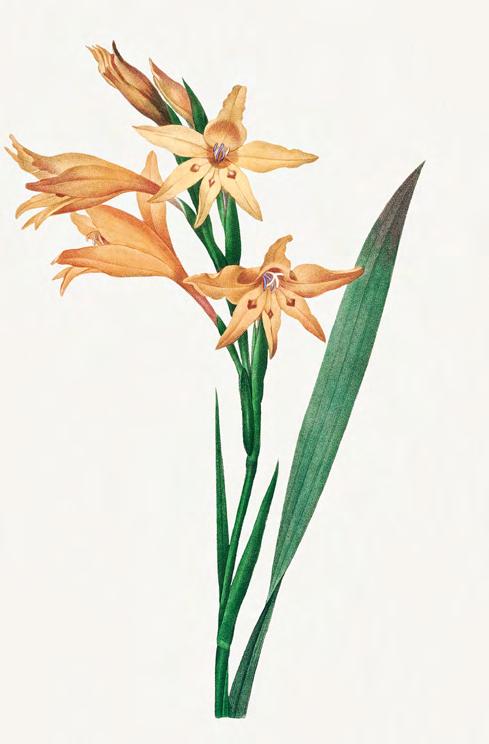
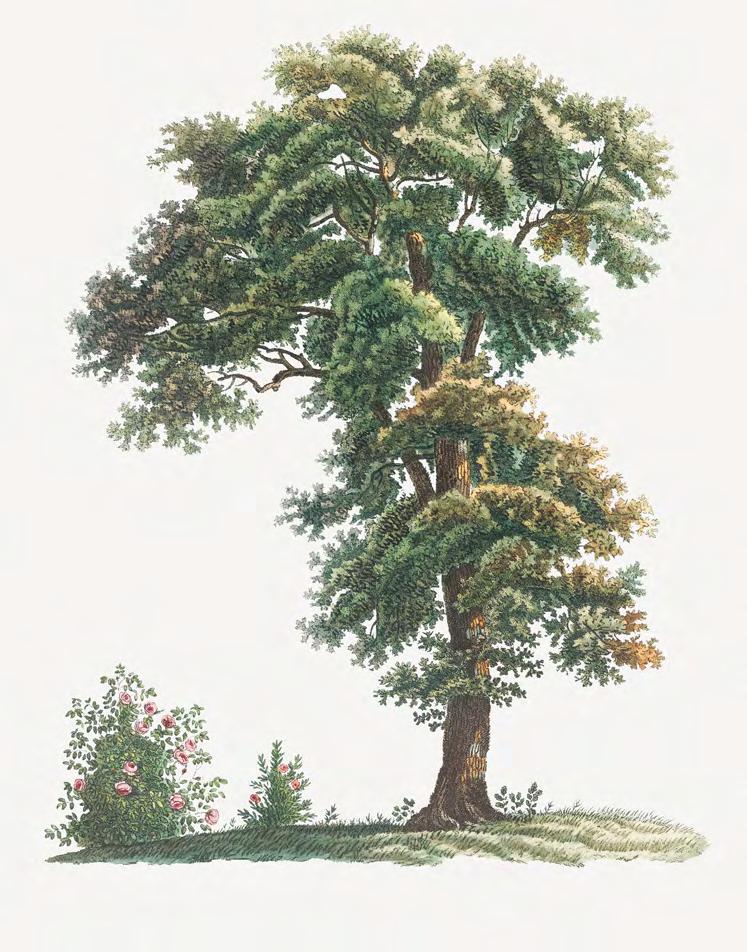
Alexis Kuri Garcia
Long lost their stories never will be
Eternally grateful for their contributions to our world
Grandiose testament of humanity’s potential
Everyday inspiring others with their legacies
Never giving up on the hopes and dreams that drive them
Diverse as they come, from all lands and cultures
Showing us what we can be capable of
Tobin Zheng
It’s fall, 2012. I dash down a hill next to my elementary school. The soles of my slightly-too-large neon green running shoes slip on the dry grass, causing me to lose balance and giving my butt a one-way ticket to the ground below. I quickly hop back up with all of my prepubescent agility and turn back towards the top of the hill, reaching my arms up and stretching my fingertips wide.
“I send a gust of wind that blows you off your feet!”, I shout. I can see swirls of pale green energy emanating from my chest, spiralling down my arms and shooting in a wide blast out of my hands.
My friend begins to run down towards me, hands sweeping a dramatic arc in front of her. “I make a pool of water under me that I can fall into safely! Also, you’re drowning now!”
“I literally control air, remember?” I respond, as I start to run back up the hill. “I can just make a bubble for me to breathe in. I also control plants. So, a bunch of vines shoot out of the ground and wrap around you.”
“Well, I have lightning powers, so I blast the water with electricity and then—”
The shrill ring of the school bell interrupts our epic battle, signifying the end of the lunch period. We vow to pick up right where we left off the next day as we trudge back inside for class.
Nobody bats an eye at a bunch of elementary schoolers running around pretending to have superpowers, but the older we get, the less socially acceptable it becomes. In fact, the term “roleplay” in the adult world evokes images of taboo bedroom fantasies, or nerdy basement dwellers congregating in the woods with foam swords and wooden shields (for the record, there is nothing wrong with either of those—people should be allowed to enjoy things).
Roleplay has been a big part of my life since childhood. In high school, my friends and I had a Skype group chat where we played a group of rebels banding together to overthrow a tyrannical queen and her four royal children, who each had different superpowers. Most of us played both a protagonist and an antagonist, allowing us to create a dynamic story rather than simply trying to get one side to “win”.
Each message we sent was a new paragraph in a story we were writing together—the core of roleplay is collaborative storytelling. When you write a story alone, you are the sole
decision maker—the entire world is yours to shape. Adding other people to the equation means not every outcome will be in your control, creating a richness and depth that is difficult
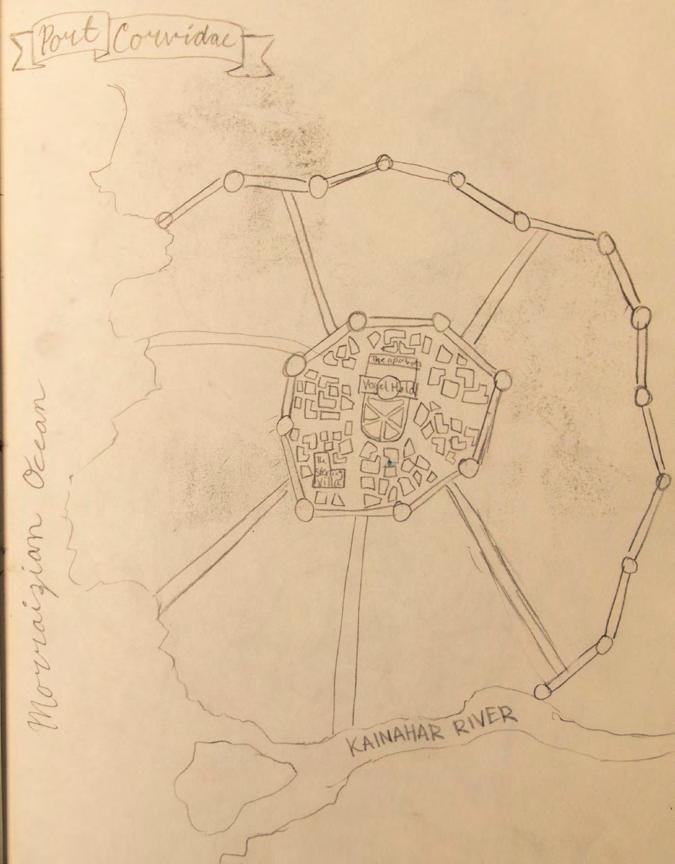

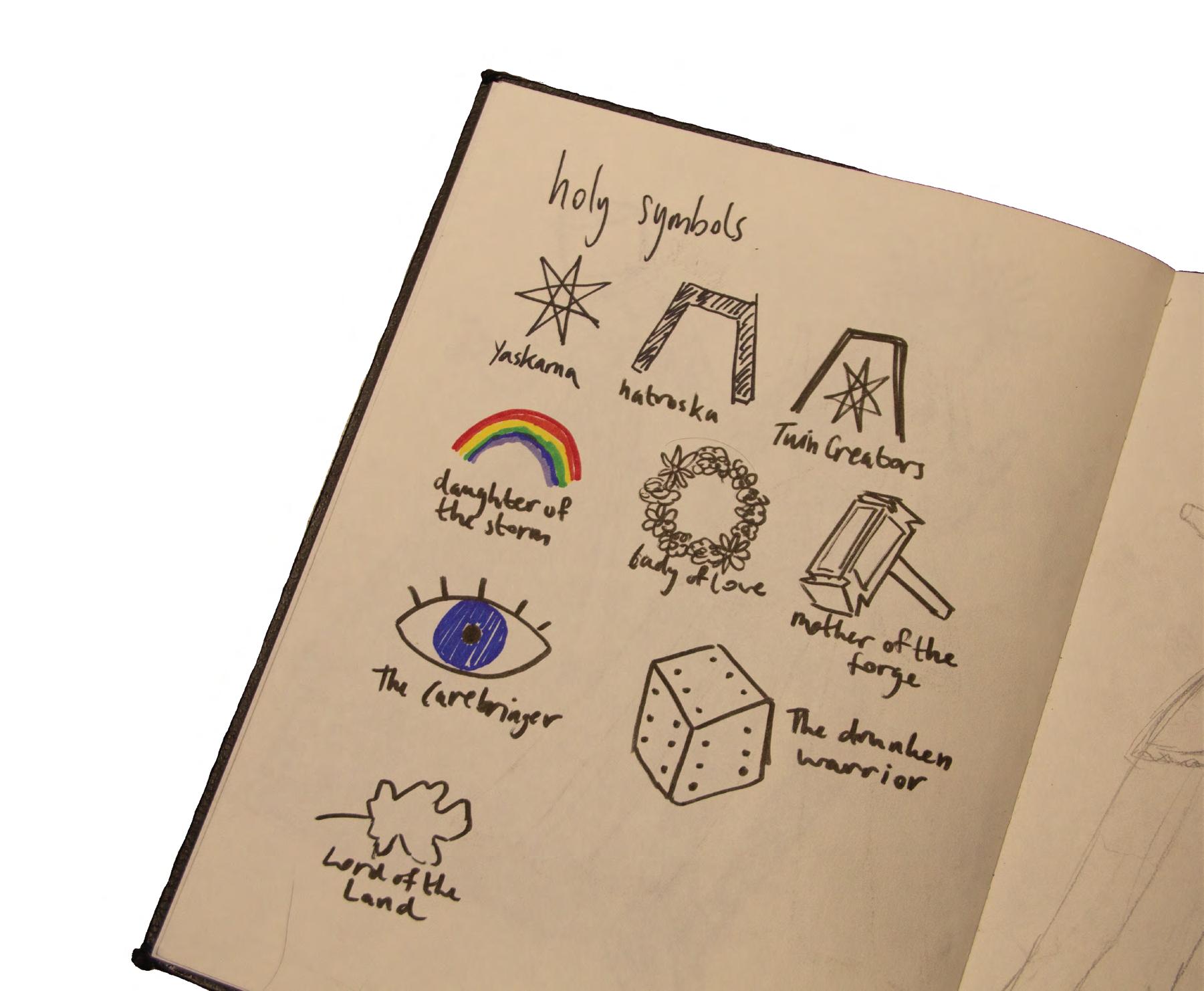
Pathfinder* campaign, which launched my interest in tabletop roleplaying games, or TTRPGs for short. I believe that TTRPGs and free-form roleplay are two different kinds of roleplay that each have their own place in the world.
Tabletop roleplaying games tend to be a more socially acceptable way for teens and adults to continue their interest in roleplay. These games allow people to tell stories together within a framework—they give a jumping-off point for a setting and allow for a lot of flexibility in worldbuilding. A game can be built from the ground up using an original setting complete with its own history and lore, involve characters plopped into a premade universe, or can be written from start to finish much like a video game or a choose-your-ownadventure novel. Each game is unique, catering to only the players involved, so the rules can also be manipulated and changed to better suit the interests of the group members. Many TTRPGs involve dice rolling, which creates an element of uncertainty that adds excitement to the game.
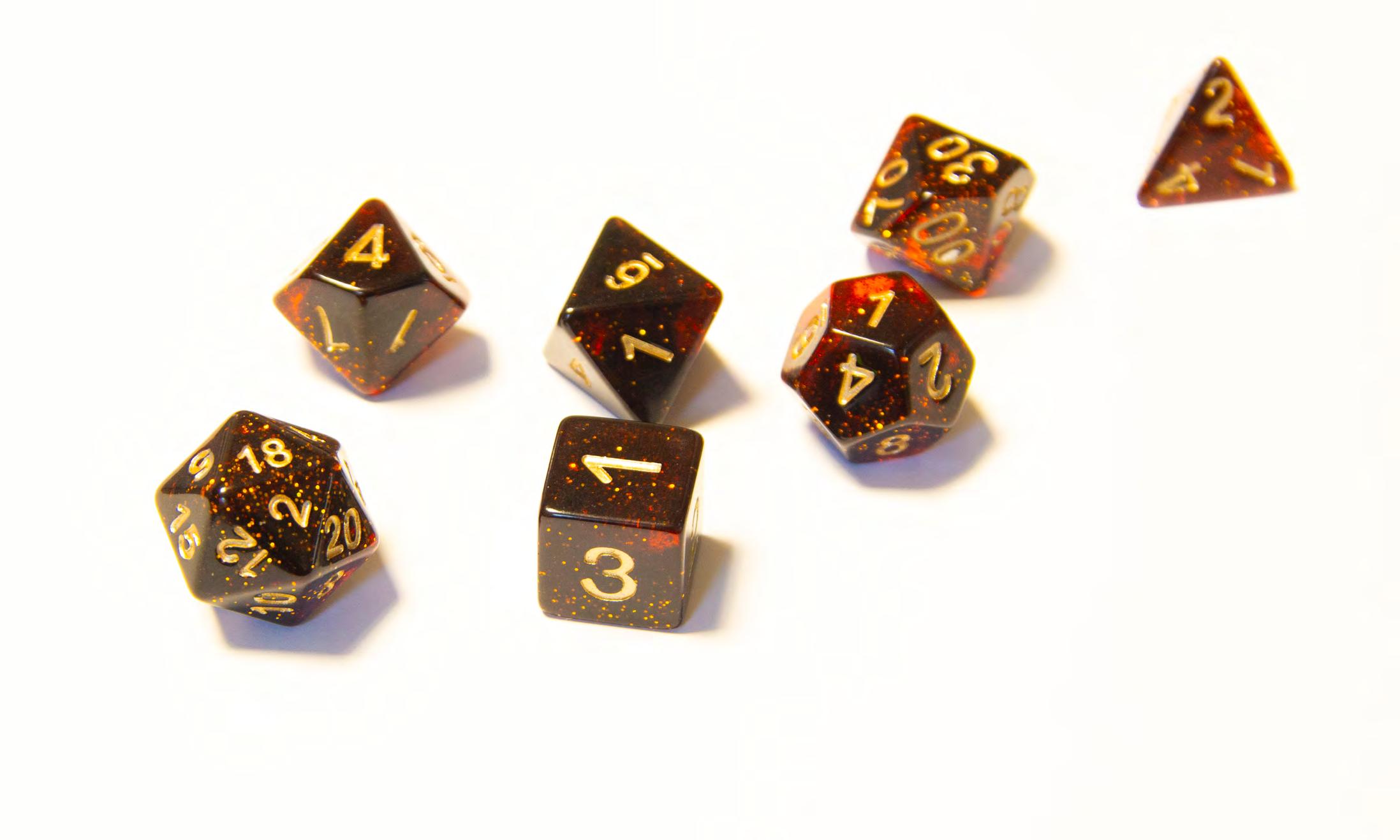
overall lighter tone compared to other games such as Paranoia or Vampire: The Masquerade, allowing the game to appeal to audiences of all ages. Additionally, the rise of actualplay
D&D podcasts has given people the opportunity to learn the rules and familiarize themselves with the game before trying it out for themselves. It’s dominated the tabletop roleplaying world.
I love D&D—it’s a game that impacted me greatly throughout my later teenage years and the many friends I made and connected with through it are people I still cherish today. Although it’s been more than two years since I last rolled a D20, it’s definitely something I want to be a regular part of my life again someday.
There are tons of different TTRPGs out there, but in the last decade, Dungeons & Dragons has surged in popularity. The Tolkien-inspired high fantasy setting of the game is familiar to even casual consumers of pop culture, and has an
However, I don’t believe that tabletop roleplaying games are a more mature or grown-up evolution of the makebelieve games that many of us played as kids. As adults, the concept of free-form
roleplay tends to be confined to the world of improv comedy, but why should it be limited in such a way when there is so much more it could be?
The theatre of the mind is not bound by the laws of the universe— you’ll never find a bigger playground than your imagination. Free-form roleplay allows people to immerse themselves into another world, where possibilities and outcomes are all dictated by the people participating. There is a certain thrill in being able to manipulate every aspect of the setting, and stories can take wild turns. Best of all? The only tools you need to play are with you everywhere you go. Spending money seems to be the first step to having fun nowadays, and it’s rare to find an activity that truly costs nothing.
Society encourages kids to play makebelieve to foster their imagination and creativity. When they reach adulthood, however, there is an expectation to conform, and developing one’s creativity is restricted to activities deemed to be socially acceptable. Those who do not fit in with these expectations are labelled as childish or strange.
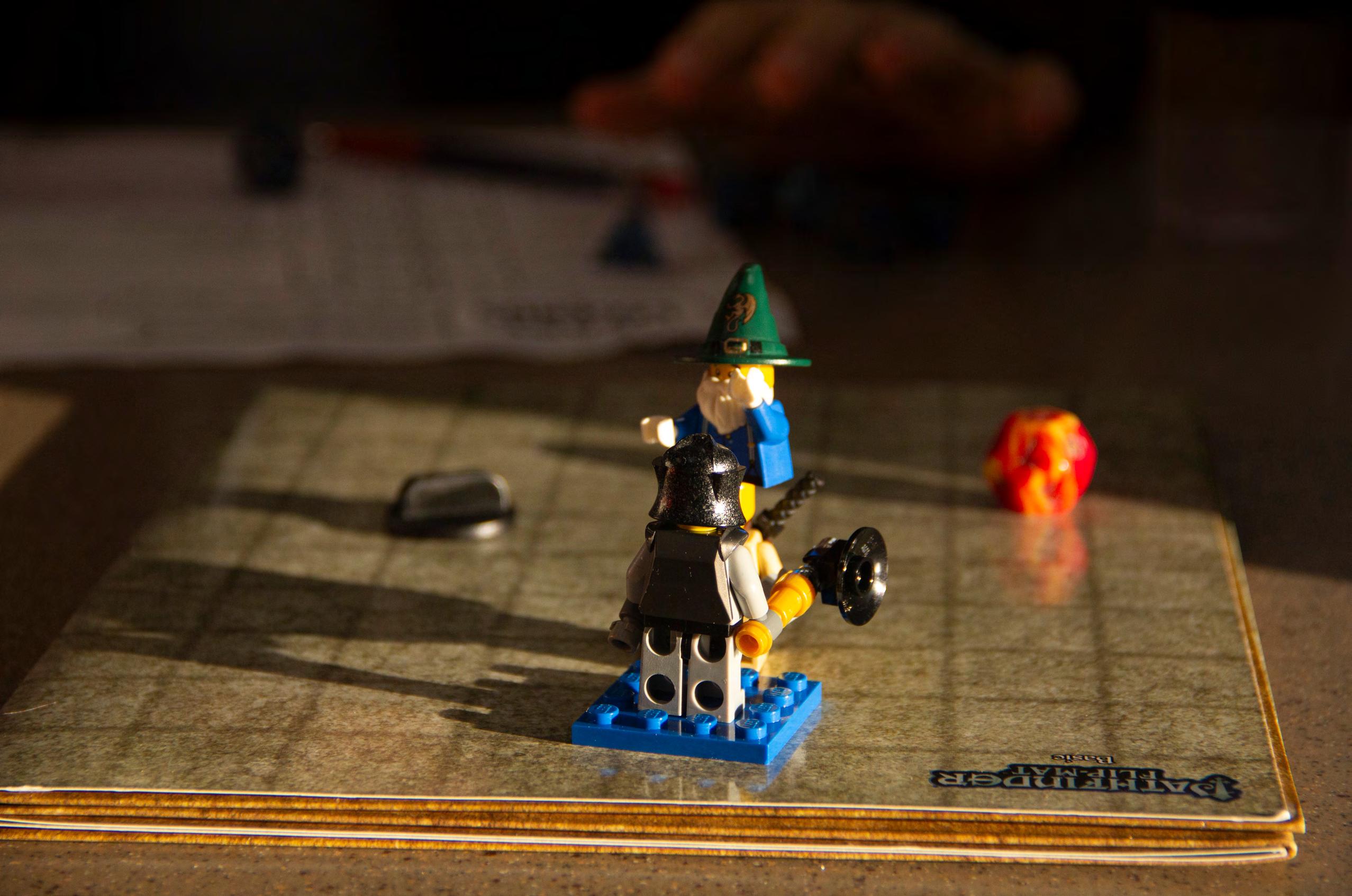
Continuing to challenge your creativity as an adult keeps the mind active, flexible, and open to new ideas, and limiting your options for how to do so is practically antithetical to the concept of creativity itself. It’s also a core skill for engineers, seeing as we dance at the forefront of innovation.
Another reason to roleplay is that it involves assuming the identity of a character, but the character always contains a portion of your own self. Choosing to portray a character who is quite different from yourself, whether it be in appearance, personality, or position in society, allows you to experience an alternate perspective and discover empathy. This can inspire people to approach day-to-day life with more kindness. Regardless of how different your character is to your human self, however, you still put bits and pieces of yourself into your character, as you are the master of the puppet. This can be a way to explore aspects of your identity, or reflect on personal emotions or conflicts from a safe distance. Roleplay can be deeply cathartic, and some liken it to therapy.
So let go of your fear of judgement and try something new! Whether it’s a TTRPG or something more free-form, there’s something for everybody in the world of roleplay. Create stories with your friends, or find a group of complete strangers to make new connections with via roleplay. Become a 17th-century pirate, a desert frog wizard, or a giant orange city-destroying slime monster. Solve murder mysteries, fight dragons in space, or start a revolution. You might find yourself, at times, with a sore abdomen and wheezing each word out in between breaths, or attempting to steady your voice as your nose stuffs up and tears roll down your cheeks. You’ll remember these moments, too—not just you, but everybody with you—, braiding your paths together in spacetime forever. Go forth and tell stories together. Hold creativity close to your heart, and let your imagination run wild.
*The Pathfinder Roleplaying Game is a TTRPG derived from the revised third edition (3.5e) of Dungeons & Dragons.
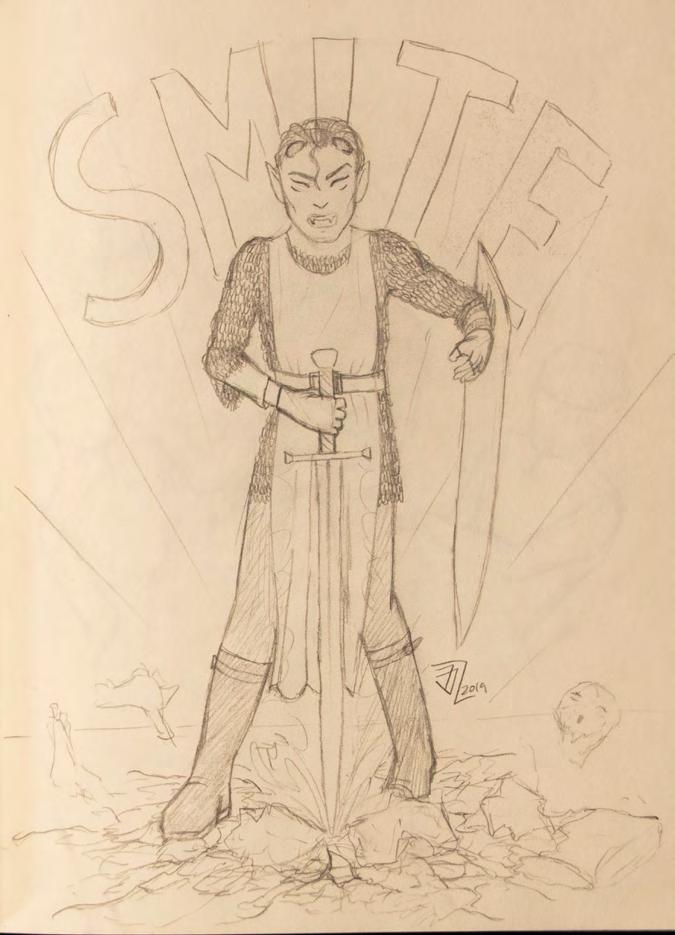
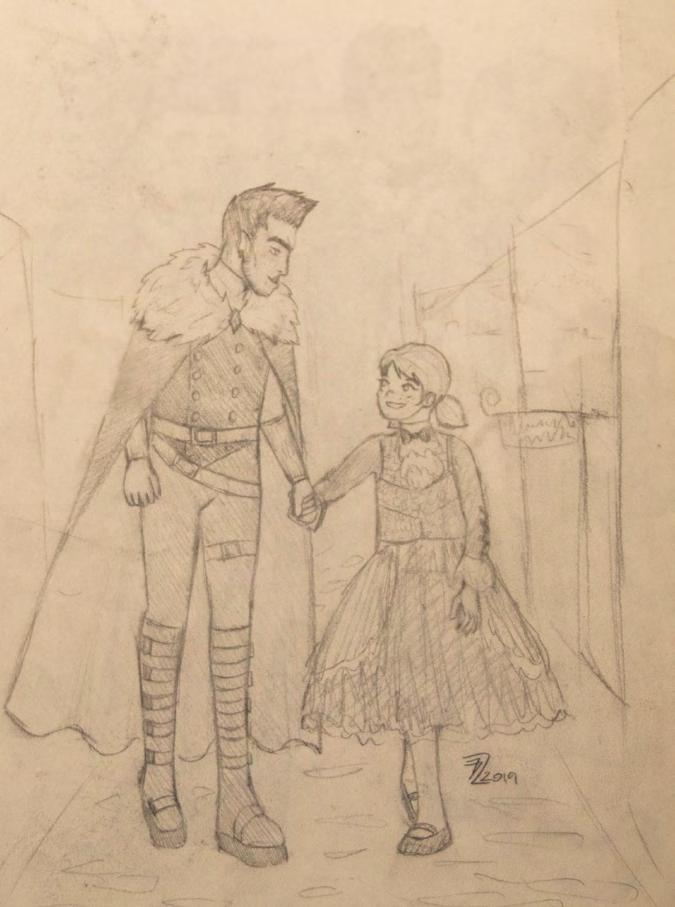
Photo details (incl. prev pages): Assorted sketches from my D&D games in high school— worldbuilding tidbits from the campaign I ran and character/scene sketches from the games I played. I spent a lot of time doodling during D&D games to keep my hands busy while I wasn’t rolling dice. The photo of the playing grid is from when I played the Wendy’s promotional TTRPG, Feast of Legends, inside a Wendy’s.
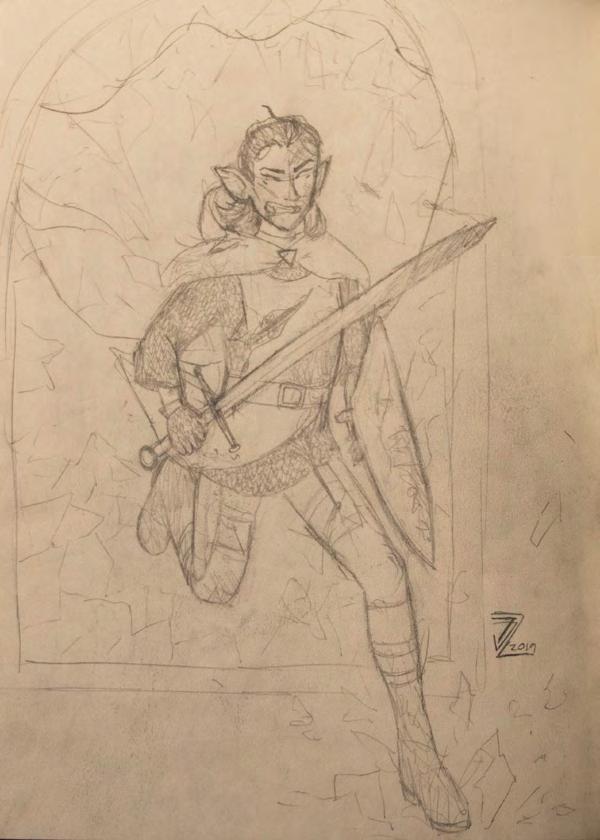

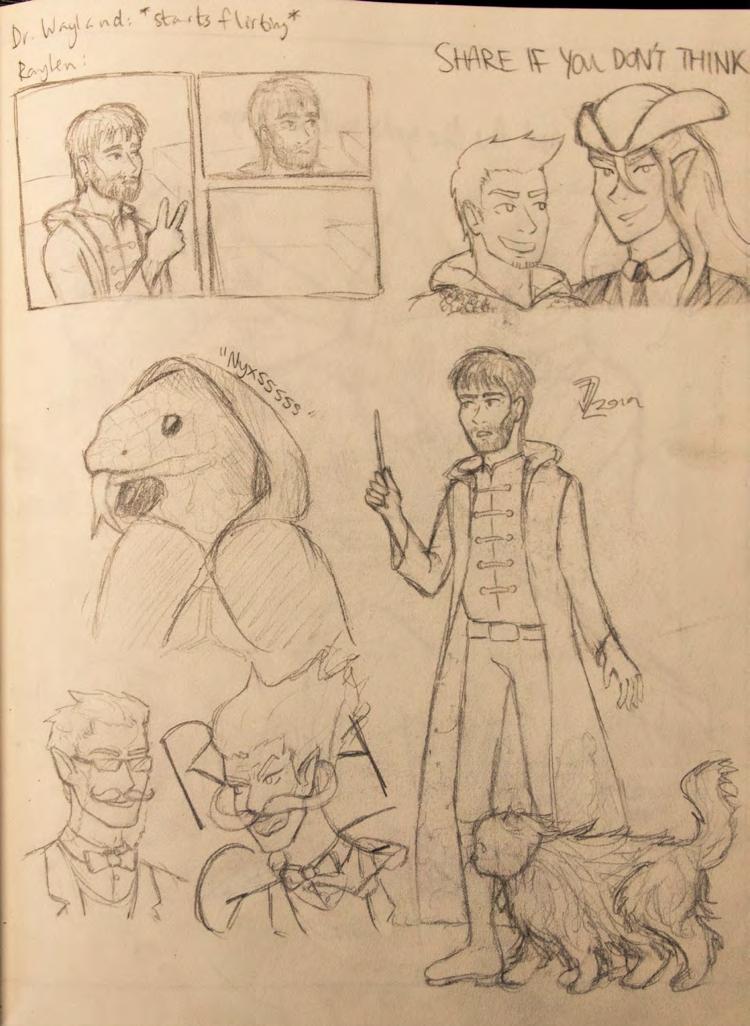
Kaija Mikes
Did you know that UofT’s Faculty of Engineering has been around for more than 150 years? Within all that history, there are bound to be some fun facts and stories worth remembering. I’ve always been fascinated by the shenanigans of students before me, and, of course, how the chaos will only grow with each new class at Skule. I had the opportunity to interview the Skule Archivist, Ben Gloade, who is a Project Director responsible for collecting and archiving Skule history and sharing it with all of us!
Feel free to skip around and read the parts you find interesting (I usually like looking at all the pictures before actually reading anything), there are no rules and that’s the way I like it! Hopefully you enjoy this chat with the archivist as much as I did.
The Little Red Skulehouse.
Kaija: So, I’m here with Ben. Say hi, Ben.
Ben: Hi Ben.
K: That was amazing. Ben is the Skule Archivist. What do you do exactly?
B: I can’t remember the words exactly, but it’s something like preserving Skule history and sharing it with the school.
K: OK, so you preserve things. Do you mummify people or something?
B: [We] only [preserve] the Toike and the Cannon. The archivist collects all issues of the publications for each year and stores them!
K: That’s very nice. Are old issues of student publications available for anyone to view?
B: Yeah! You can talk to the archivist, and I’ll give them to you to peruse.
K: That’s wonderful! So how did you get into all this? What made you want to look into Skule history and stuff like this?
B: I think it was during Skule150*, because I was doing research and communications on the Skule150 exec team, and I was running the social media account. I was doing an Instagram post about Skule history
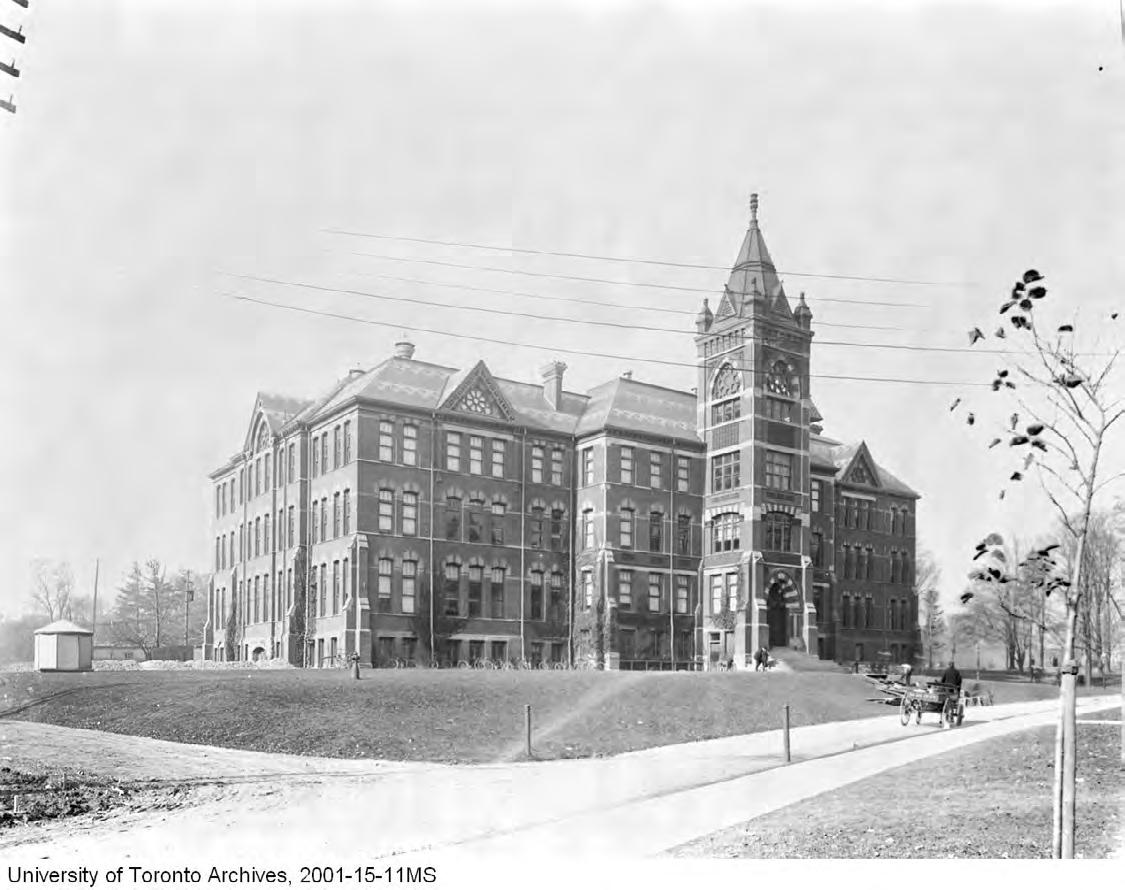
every day for 150 days. So, I had to do a lot of research and I started to realize it was really interesting. I just like Skule history because it’s really fun and cool. I applied for Archivist this year so I could keep looking into it.
K: What kind of research did you get to do for Skule150?
B: I was focused on finding stuff that would be interesting to put on the Instagram [page]. I looked through a lot of pictures, probably every single picture that’s related to engineering on the UofT archives website (https:// utarms.library.utoronto.ca). I was looking for things that were particularly eye-catching or cool. Most of the research I did was from a book called The Skule Story, which is an interesting read.
K: Was it written by an engineering grad?
B: I don’t know what he was, but his name was Richard White.
K: Do you know when it was written?
B: I don’t know, but I can find it for you. Do you want to know?
K: Absolutely!
K: The Archivist gets up and walks over to one of their many cabinets. They start
giggling because I am narrating out loud. They pull a book out of the filing cabinet and come back to the table.
B: It goes up to 2000 and it was published in 2000 as well. It’s also really cool that it has information about the old Skulehouse.
K: The old Skulehouse?
B: The Little Red Skulehouse, the original engineering building at UofT.
K: So, Sandford Fleming hasn’t always been the main engineering building? When did SF become the center of student culture and the Engineering Society?
B: It was relatively recent. I (and the other Frosh Week Loremasters) were talking to an alum who was the EngSoc president in 1971. Back then, the EngSoc office was in the Haultain building.
K: The Little Red Skulehouse didn’t exist anymore at that point?
B: No, it got demolished in ‘67 or ‘68. Then there was a transition period and EngSoc eventually moved to SF. But that wasn’t until the mid ‘80s, I think.
K: Got it.
B: I’ve been trying to figure out the
timeline here for a while now. I still don’t know when exactly The Pit became The Pit.
K: Hasn’t it always been built like a cafeteria and used as a social space?
B: No, I don’t think it’s always been a cafeteria,because there was the SF fire in 1977. After that, the inside of the building was gutted, and then rebuilt. That might have been when they put in The Pit.
K: The Pit’s only been around for, like, not even 50 years?
B: Yeah, it can’t be older than 1977 when the fire was.
K: I guess the Pit’s fairly recent too then.
B: Yup!
K: Does that mean that Skule culture doesn’t need to have one place that it’s based in? That the culture itself can exist anywhere?
B: Yeah, for sure. But I think a big part of the culture is using the space that we currently have. Skule culture would definitely be different if we didn’t have The Pit.
K: I wanted to ask you about your favorite Skule history fact. Do you have something that you really enjoy like an event or something about the subject in general?
B: There are so many cool things. Honestly, a lot of it is super interesting. I just don’t know how this entire mini culture became a thing, you know?
K: Do you have any plans for documenting the creation and growth of Skule culture? Do you think you would be able to get enough information about how it’s shifted over time?
B: I think it’s a little weird, since a lot of things have happened and people haven’t really documented them. The only way you would really be able to fill in all the gaps is [by] talking to alumni.
K: What about sharing Skule history with people?
B: We’re going to do events this year, like exhibits to share our Skule history. We’re going to do information posts on Instagram and trivia nights as well.
K: Trivia nights sound super fun! Do you think there’s anything that you think would be surprisingly fun for someone just getting into Skule history?
B: There’s just a lot of parts of history that most people don’t know. I think people would, if anything, want to study all these old people who have done weird stuff like [they are] bugs under a microscope—
K: So it’s the bizarreness.
B: —and [ask] why did they do that?
K: That perspective does make it even more interesting.
B: I think we usually get a good reaction from people when they see the weird pranks that classes have done over the years, and stuff like that. That’s always a fun thing to learn about.
K: What do you think creates Skule history? Why do we remember specific stories and people?
B: I think it’s just what people choose to share. People are doing weird, silly, goofy things all the time. It’s just that people talking about it pass on the story of it, which makes it into more than just something that happened to you one day.
K: I guess if you wanted to put together more history, you would have to reach out to alumni to hear their stories, right?
B: I’m kind of worried that people won’t answer emails, but the alumni I’ve talked to so far have been very friendly, so that’s been nice!
K: How far back do you think you could find people who would want to share their stories?
B: We had a Coffee with Chris the other day and [Dean Yip] mentioned meeting other alumni at the Skule reunion at the beginning of June. I think the oldest person that he found graduated in 1955 or
something like that.
K: That’s really cool! I wonder what their stories would be like.
B: I think it all depends on what was important to them at the time. That’s probably what they would remember about Skule.
K: So Skule history is being shaped by everyone who’s here right now. Not to be cheesy, but we’re making history.
B: Absolutely.
K: If you had anything you wanted to say to the incoming class of first years, what would it be?
B: I would tell them not to take school too seriously. Any aspect of it. Don’t take academics too seriously. Try hard, but it’s also not the end of the world if you have some bad grades or even fail a class. Same with extracurriculars, don’t take them too seriously. Have fun and

Engineering Science grad prank in 2009, a giant labyrinth setup in the SF Atrium. The prank was subsequently destroyed by the MIEs for their Iron Ring party (which was held in the Atrium), and rebuilt almost exactly as it was. (Pictured is the first version before reconstruction)
try your best, but at the end of the day, again, it’s just a bunch of people doing some degree of stupid thing. Just try to enjoy yourself. Join the club, make some friends. Live your life.
K: I think that’s really good advice. Is there anything else that you wanted to talk about that I missed?
B: What’s your take on Skule culture and history?
K: It’s interesting to me that there are a lot of things which are kept for a little bit and then fall away, and there are some which are kind of consistent through many years. For example, the Lady Godiva Memorial Bnad was formed in the 50s.
B: 1949.
K: Oops, thank you. They started out as a serious marching band that would play at competitions and spirit events. But over the years they became less and less serious and more and more silly. We still have a group that plays music for spirit events, but the vibe of it has changed. That’s interesting to me. You never know what’s going to be the thing that sticks around and what’s going to be the thing which falls away in a couple of years. The uncertainty of it is fascinating and a little scary.
B: Like [how] over COVID, we lost a ton of Skule traditions.
K: Oh yeah, absolutely.
B: I know we got some of them back, but probably not all of them, right?
K: Some of them have died for good.
B: People are in university for about five years, so there’s five generations of people in Skule at a time. Once they graduate, they’re gone.
K: And you never know what the thing that’s going to disappear with that generation of people who are leaving is going to be. That’s the part that fascinates me the most. What are they going to decide not to pass on? What’s temporary, and what is going to be a long-lasting tradition?
B: Even though things are always changing, I think the vibe stays the same—just people having a silly goofy time.
K: I hope so! If you have a bunch of 18–23-year-olds in one place, they’re going to do some stupid stuff. It’s like, we’re here for a good time not a long time.
B: Yup. I have another question [for you], why do you think it’s important to remember Skule traditions or history?
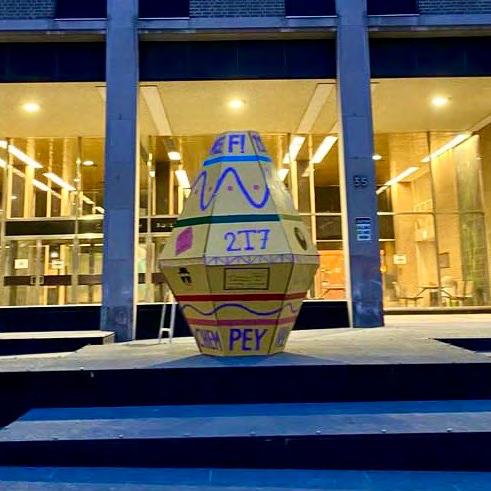
K: I’ve always been a history buff, and it’s good to kind of have a knowledge of how things have gone in the past. This is going to sound cynical, but—so you don’t make the same mistakes again. But also so you can build off past successes as well!
B: That makes a lot of sense for when we have to accomplish a goal. But what about traditions that we do for no reason at all? It’s just that we just do something this way because that’s how we do it.
K: I think it gives you something [to have] in common with a lot of people. I don’t know, but I like the feeling of having something stupid and weird in common with many people. Both with people who have graduated and with people who aren’t going to start for another 10 years.
B: It connects you with other people.
K: Exactly! Even if you never meet them, you kind of know that there’s a group of people who have a similar shared experience to you. People who appreciate silly things.
B: It’s nice to be part of something bigger.
K: Yeah. Something bigger and stupider than yourself.
Thank you for coming along on this little ride with us. To get a little deep for a moment, one of my favorite parts of Skule is the connections that I have formed here. I have had the honour of meeting so many wonderful people here, and I have learned so much from each and every one of them. If you found this interesting, maybe come to the next archives event? Sharing your interests with others is an amazing feeling, and like Ben said, live your life and don’t take anything too seriously.
You can find the Skule Archivist on Instagram at @skulearchives, and email them at archivist@skule.ca.
Related and Referenced Sources: skulepedia.ca (Skule’s history/information website, managed by the Archivist)
@skule150 on Instagram (Student run account active in 20222023)
A Skule Story by Richard White https://utarms.library.utoronto.ca (UofT Archives Website)
*Skule150 was the celebration of the 150th anniversary of the founding of the faculty, then known as the School of Practical Science. Festivities occurred throughout much of 2023.

“Digital painting with 3D renders because what else am I gonna do with my CAD skills and SolidWorks associate certificate.”
Inspired by the eerie and avant garde images from aespa’s album, Armageddon.
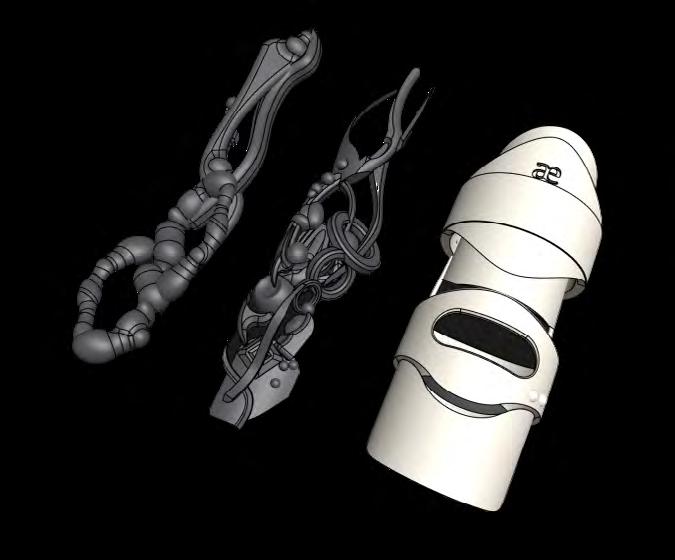
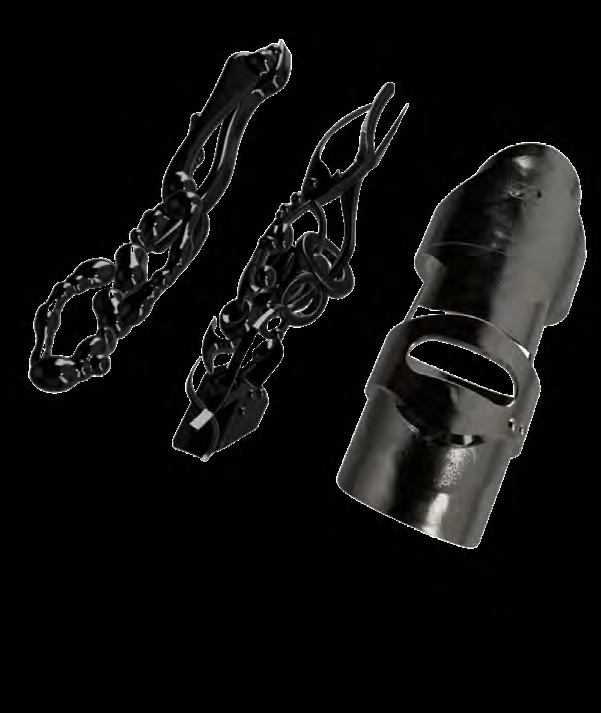
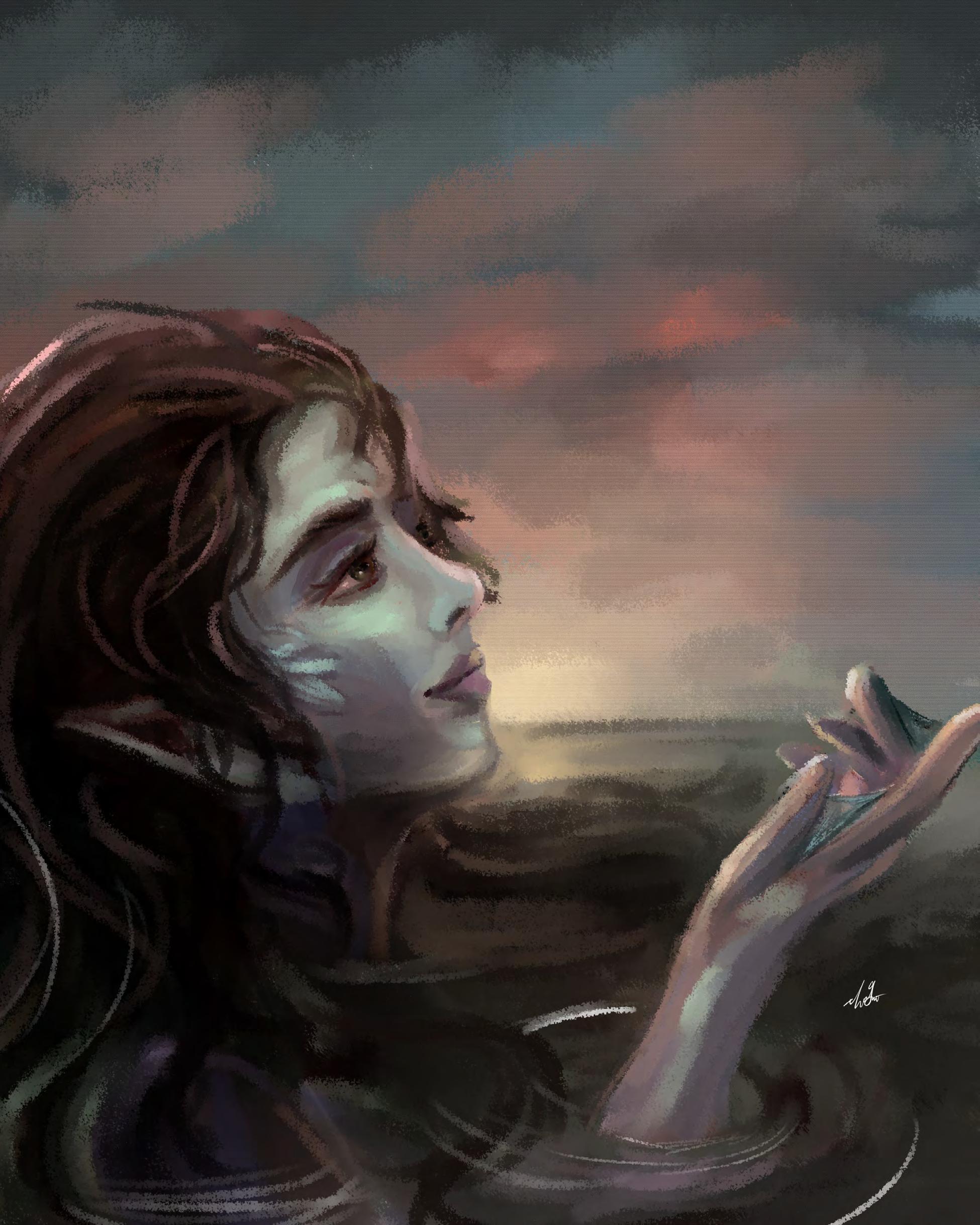
Alexis Kuri Garcia
Frida Kahlo was a Mexican surrealist artist in the early 20th century. She created around 200 paintings, sketches, and drawings during her 47-year lifetime. Despite her short life, she is a significant cultural figure in Mexican history. She mainly painted herself, and her life experience, which was riddled with pain and suffering, from numerous health issues to her unstable marriage. She was heavily involved in politics and an important advocate for women. Ever since historians rediscovered her in the 90’s, she has been regarded as a Mexican, feminist and LGBTQ+ icon.
Frida Kahlo was born Magdalena Carmen Frida Kahlo y Calderón in “La Casa Azul”, in Coyoacán, near Mexico City on the 6th of July, 1907. Her mother, Mathilde Calderon y Gonzalez, was born in Oaxaca. She was mestizo, having had an indigenous father and a Spanish mother. Her father, Guillermo Kahlo, was a German photographer whom she was very close to her entire life. She had three sisters—two older and one younger.
She struggled with poor health her entire life, which started when she contracted polio at age six. She was bedridden for nine months and the disease left her with a limp while causing her right leg and foot to grow much thinner than her left. Frida started wearing long skirts to cover it up for the rest of her life. However, due to her father’s encouragement she played soccer, swam, and even wrestled (which was unusual at the time) to keep active.
Frida Kahlo dreamed of being a doctor when she was young. She was academically strong and even attended the renowned National Preparatory School in Mexico City in 1922 as one of only 35 female students at the school. She became friends with a group of students who shared similar political views and fell in love with the leader of the group, Alejandro Gomez Arias.
The September she was 18, she was on a bus with her boyfriend Alejandro when it collided with a street car. During the accident she was impaled by a steel
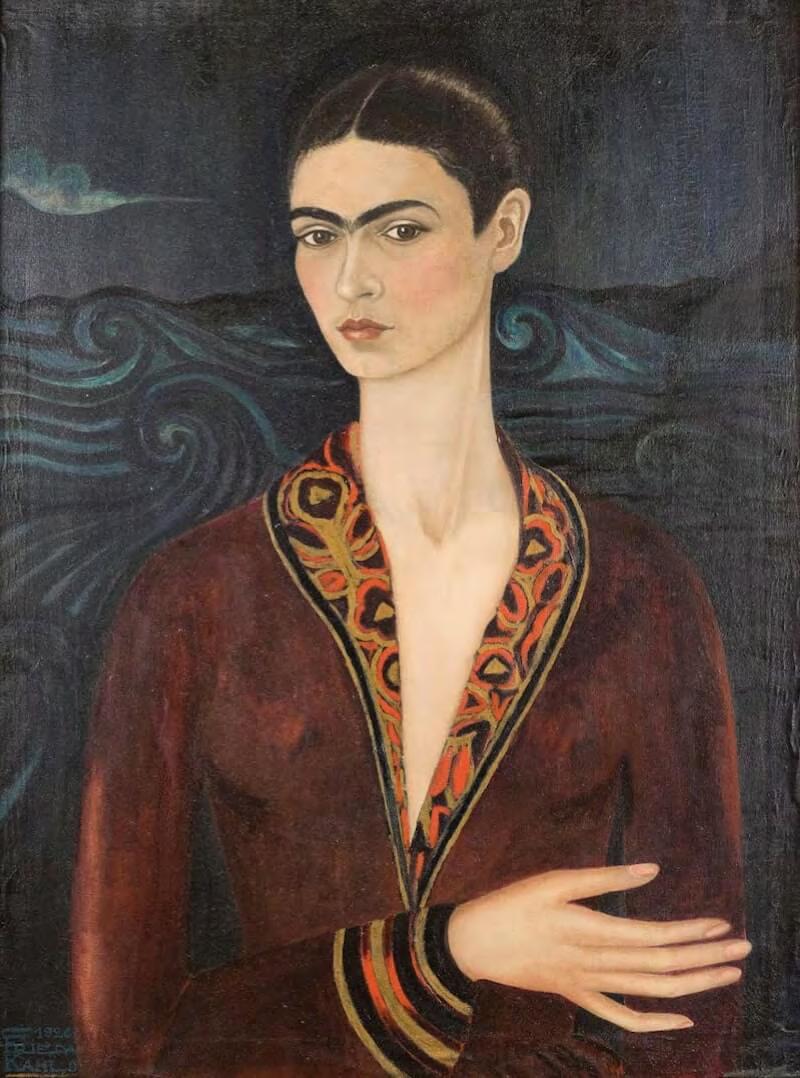
Self-Portrait in a Velvet Dress (1926) She sent this to Alejandro Gomez Arias as a token of love, hoping it could win his love back.
handrail, suffering multiple fractures in her spine, collarbone, and ribs. She also shattered her pelvis, broke her foot, and dislocated her shoulder, and spent several weeks in the Red Cross hospital. To add on to her pain, her boyfriend ended up abandoning her.
She had to wear a full body cast for three months while recovering at home. During that time she took up painting, which her parents encouraged. They provided her with paint, brushes, and even a special easel that she could use in bed. This easel was so important for her that she painted over 55 of her works on it. During this time, she completed her first self portrait.
A few years later, she asked Diego Rivera, another Mexican artist, to evaluate her work. They entered a romantic relationship and got married the following year in 1929.The couple moved around the United States for Diego’s mural commissions. They spent time in Detroit, New York, and San Francisco. Frida was fluent in English

the son Frida and Diego wanted, the snail represents the slowness of the operation, and the orchid is meant to resemble a
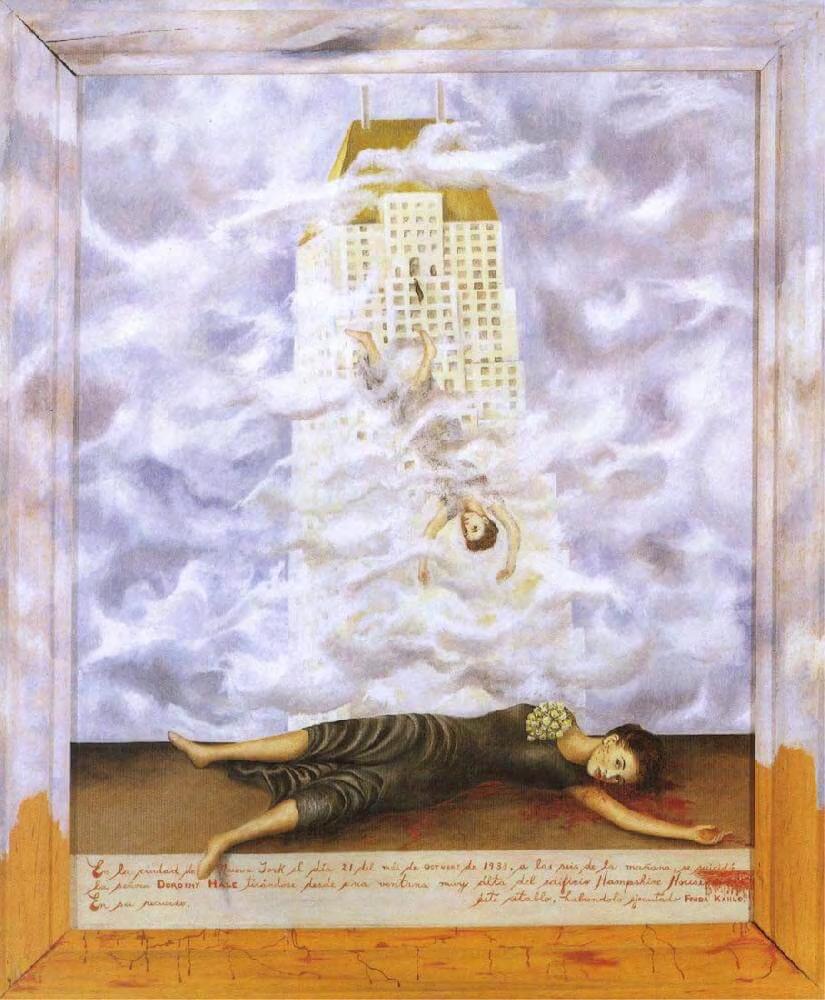
This painting shows the misery and betrayal Frida felt when Diego cheated on her with her sister. She represents her emotional pain as physical pain via the bloody heart in the corner and rod through her chest. Her lack of arms demonstrates how she felt helpless during this time. Her foot is an apparatus which may have been linked to a recent procedure she had.
The Suicide of Dorothy Hale (1938) Dorothy Hale was an American showgirl. After the death of her husband in a car accident and several failing relationships, her career was sent spiraling. She lived off her rich friends due to her depleted finances. She committed suicide in her favorite black dress off the balcony of her luxury apartment. Clara Boothe Luce, a close friend of Dorothy’s and a Frida Kahlo admirer, commissioned a remembrance portrait for her friend. She was so horrified by Frida’s in-depth depiction of the incident that she almost destroyed the painting.
and would use that to impress the press. She disliked parts of American culture; as a communist, she was frustrated by the United States’s high emphasis on capitalism. During that time, she completed a few commissions and also experienced a miscarriage. She was never able to have children due to her accident.
Her marriage to Diego Rivera was precarious. Her parents disapproved of him because he was much older than her. The couple lived separately and had separate studios. Both had multiple affairs. One notable affair of Diego’s was with Frida’s sister. Some notable ones of Frida’s were with fellow artist Josephine Baker and with exiled communist, Leon Trotsky.
After Diego’s affair with Frida’s sister, Frida was very hurt. She cut off her long hair that Diego found beautiful, painted “Self-Portrait With Cropped Hair” and “Memory, the Heart”, and the couple divorced. They remarried the next year in 1940.
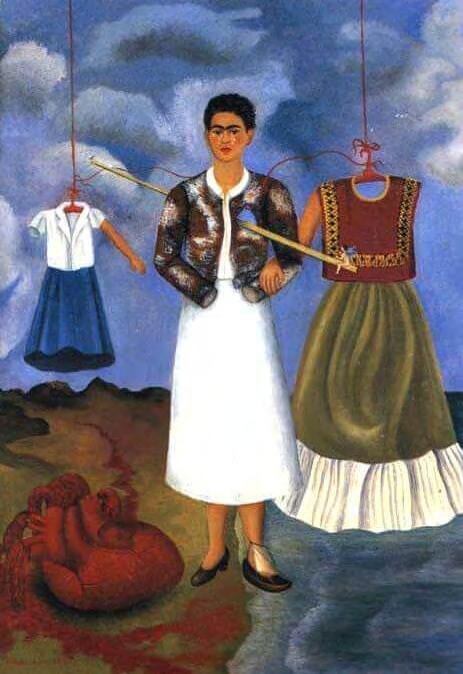
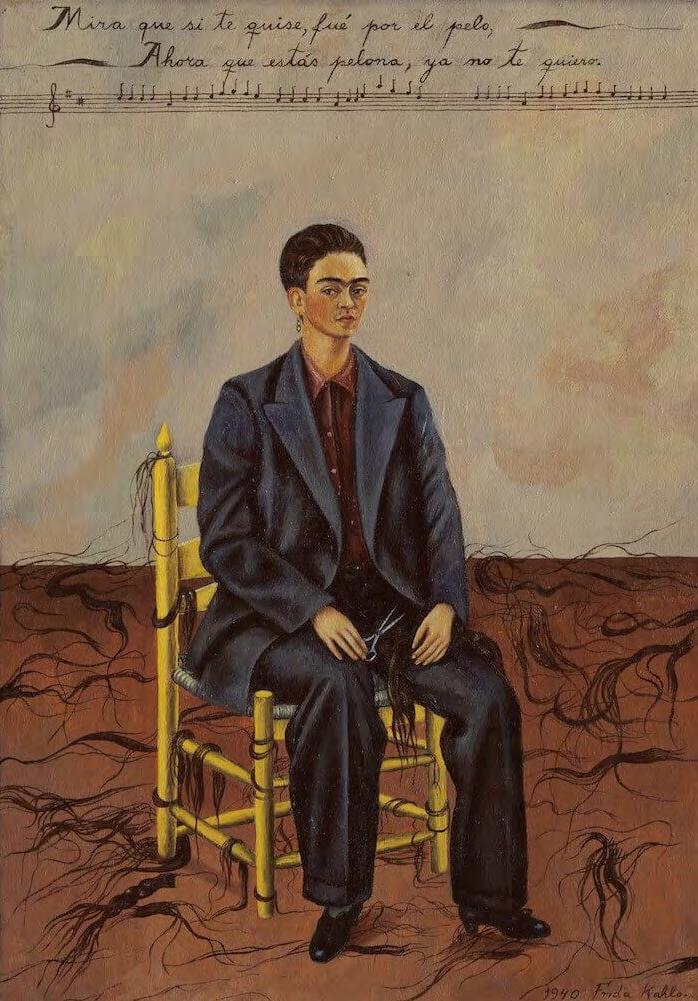
Self-Portrait With Cropped Hair (1940) Frida painted this shortly after her divorce with Diego. It is the only painting wherein she is not wearing dresses or feminine clothing, but rather, a suit. The scissors in her hand show how she herself has cut off her hair, which is lying all around the painting. The painting represents her desire to be independent.

Self-Portrait Dedicated to Leon Trotsky (1937)
This was a birthday gift to Leon Trotsky, whom Frida Kahlo was having an affair with. Frida portrays herself as seductive, beautiful and confident. He kept this portrait in his office at the time that he and his wife were being hosted by Frida Kahlo and Diego Rivera. Leon’s wife made him leave the portrait behind when they left.

The Two Fridas (1939)
This was painted shortly after her divorce to express her desperation and loneliness. The Frida on the left is heartbroken and dressed traditionally, while the Frida on the right is dressed more modern, representing her independence. The traditional Frida’s main artery is cut, meaning she is in danger of bleeding to death.
She was very patriotic and politically involved—she even used to claim that her birthday was on the 7th of July, 1910, which was the beginning of the Mexican Revolution. She was part of the Communist Party, and successfully petitioned the Mexican government into granting asylum to Leon Trotsky. She and Diego then housed Leon Trotsky and his wife, Natalia. During this time, Frida had an affair with Leon.
Her health worsened as she aged, and eventually she developed gangrene in her right foot, leaving her bedridden for nine months. Over the course of her life, she had over 30 surgeries, one of which was an amputation of her leg.
Frida only ever had one solo exhibition in Mexico in 1953, just a year before she died. She had to be taken in an ambulance, and the gallery had a bed set up for her due to her precarious health condition.
Most of her artwork was inspired by her life, and she used art as a medium to express her suffering. Many of her paintings were auto portraits, as she was the subject she knew best. Although she did not sell many of her works during her lifetime, Frida’s art now sells for millions of dollars. The house she grew up in is now a museum dedicated to her. Her life and legacy remains a source of inspiration for artists and activists all over the world.
The Broken Column (1944)
Suffering and pain were a common theme in Frida’s life and art. This painting depicts her anguish. The background is full of steep ravines and the fissure along her middle resembles an earthquake fissure. Nails all over her body and tears on her face show her pain. The nudity and phallic aspect of the column bring a sexual connotation to the painting. She stares directly at the viewer and stands straight despite the medical corset, showing her strength. The brokenness of the column also mirrors the damage to her spinal column.
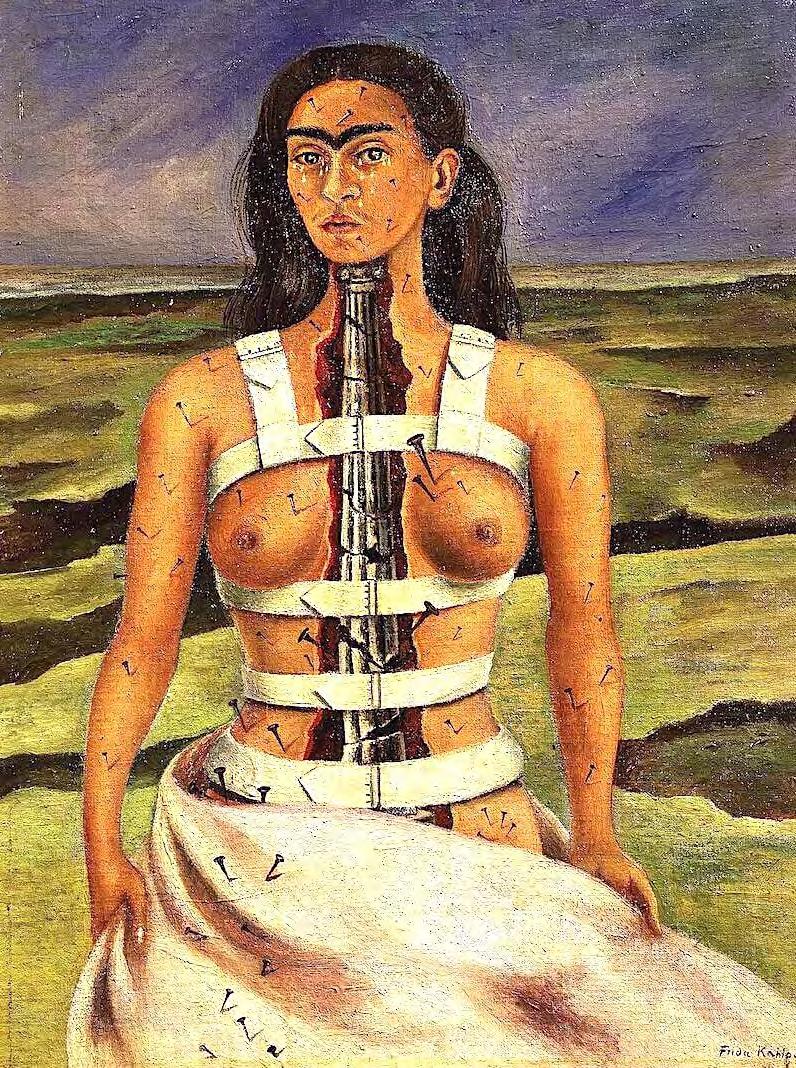
Sources:
“Frida Kahlo: Au-delà des apparences” exhibition brochure https://www.riseart.com/fr/article/2566/10-choses-a-savoir-surfrida-kahlo https://www.fridakahlo.org/ https://www.infobae.com/mexico/2024/01/13/que-fue-de-alejandrogomez-arias-el-novio-de-frida-kahlo-que-iba-en-el-tranvia-durante-elaccidente-y-la-abandono/ https://en.wikipedia.org/wiki/Frida_Kahlo
Selena Li
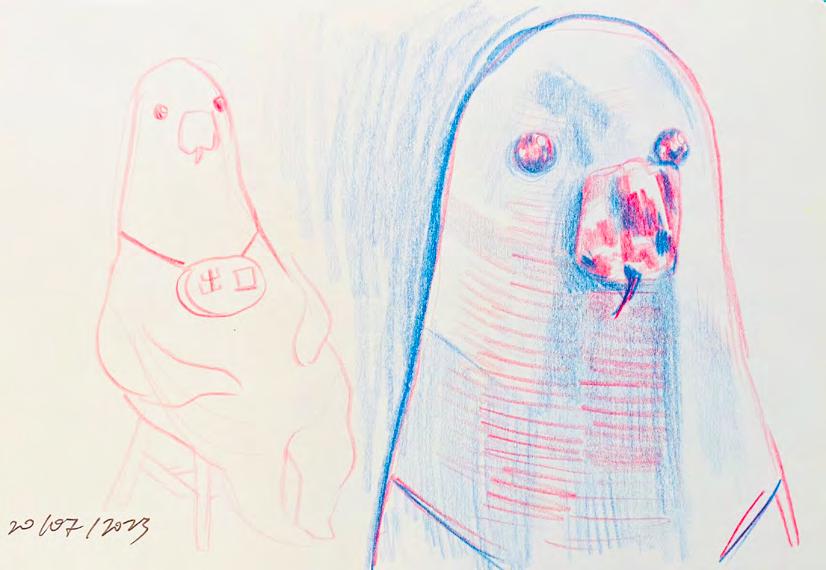
Statue from the Studio Ghibli Museum in Mitaka, Tokyo, drawn at location. Its large, wet eyes left an impression on me.
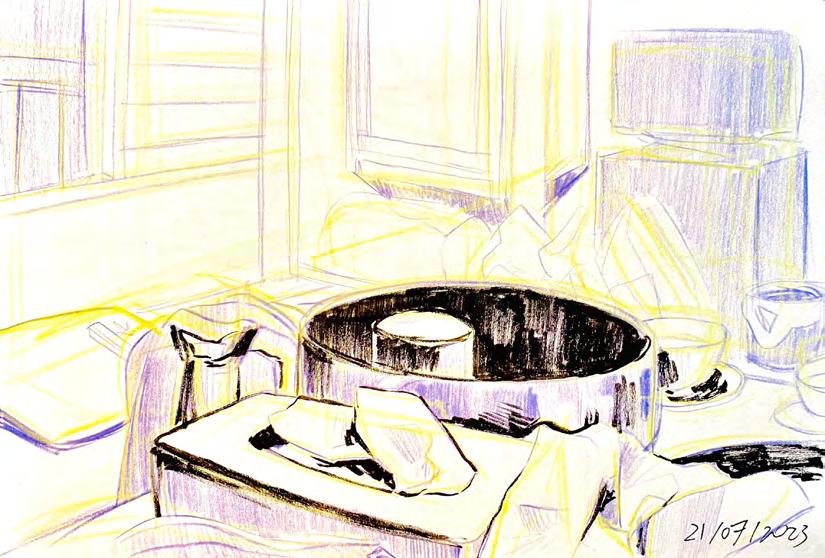
Table in hotel room on the shore of Lake Kawaguchi, near Mt. Fuji. I saw a solid combined total of 20% of the mountain the entire time there.
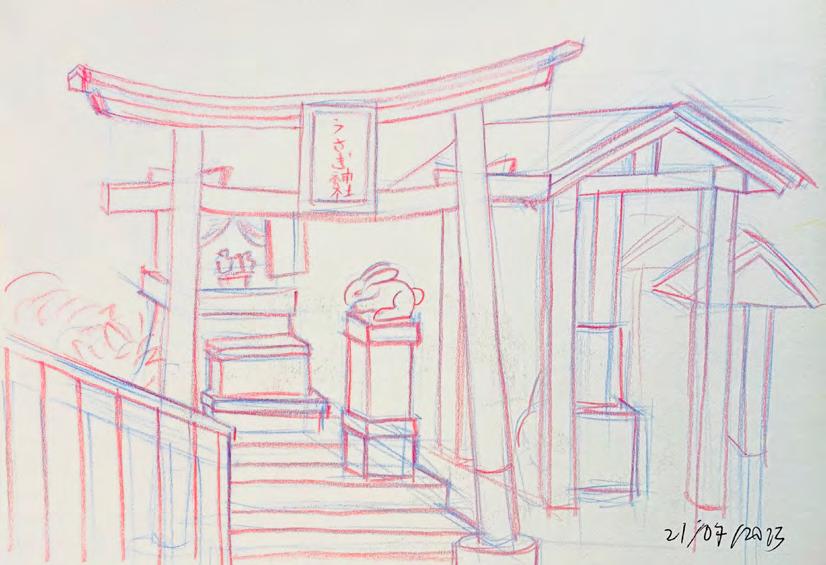
Shrine at the Kawaguchiko Tenjoyama Park in Yamanashi, near Mt. Fuji, drawn at location. I forced my family and friends to wait for me as I frantically sketched this and battled blindness from the sun.
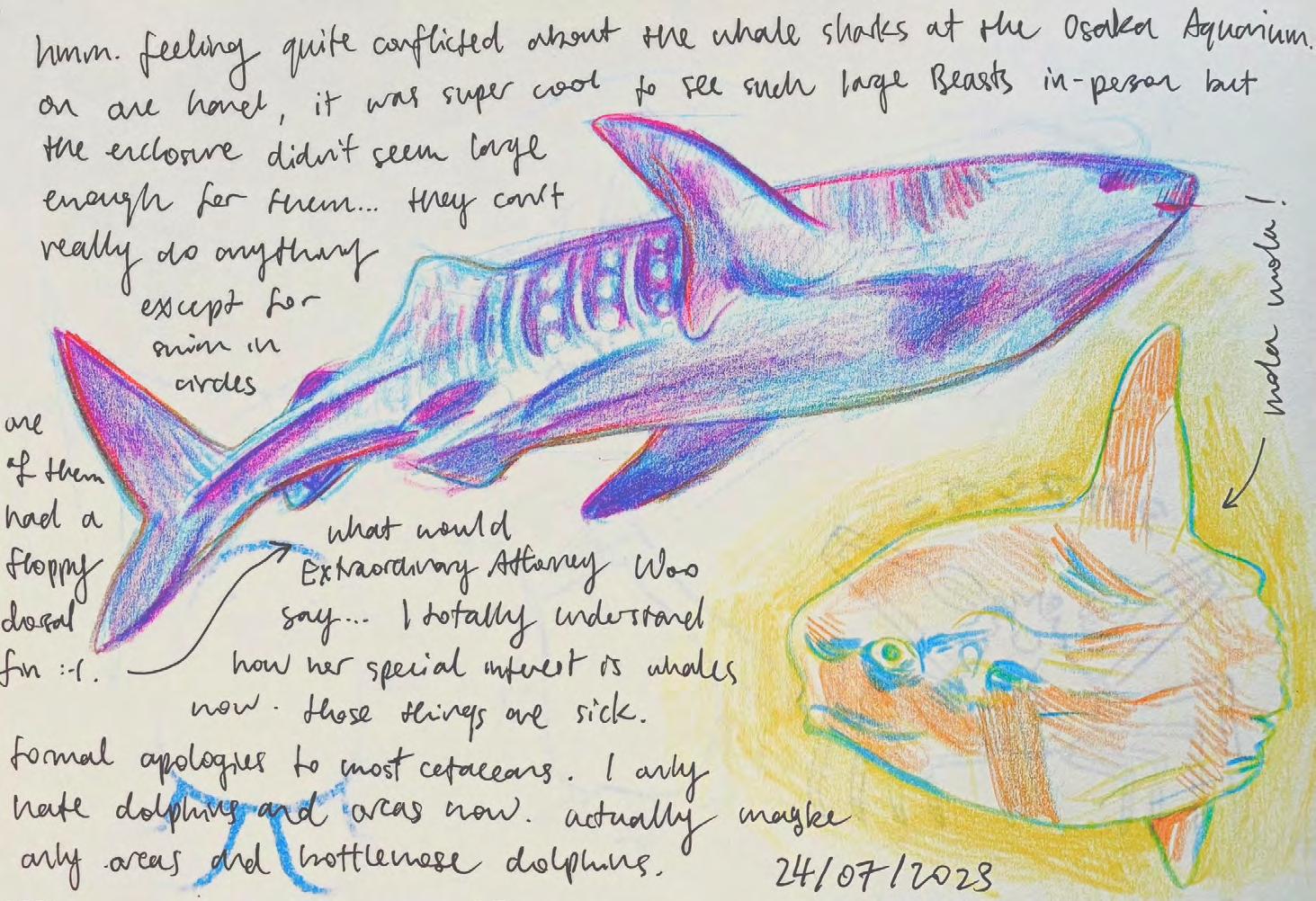
Whale shark and Mola mola from the Osaka Aquarium Kaiyukan, drawn from photos I took. Incredible sizing on these animals.
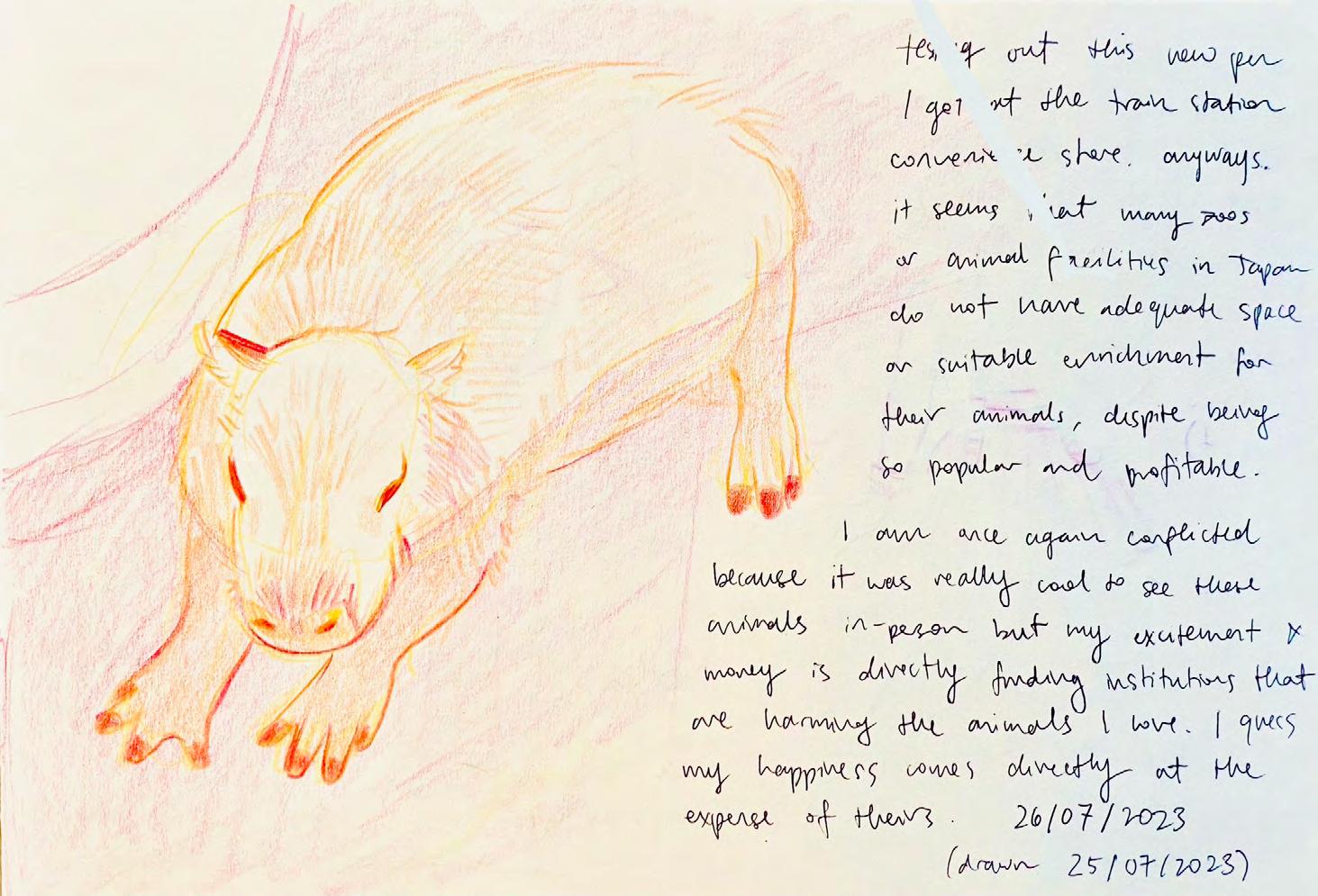
Capybara from Tempozan Anipa, the indoor petting zoo in the Tempozan Market Place mall next to the aquarium, drawn from photos I took. One of my all-time favourite images of myself is the one where I’m doing a soyjak point at this capybara.
Sean Huang
The whizz of the Red Rocket is a common sight for Torontonians going about their daily lives. Each day, the Toronto Transit Commission transports thousands of people across the city. Whether on buses driving up and down our major roads, subway trains zooming underground, or streetcars trudging along Downtown, Toronto depends on its (mostly) welloperating transit system to thrive. Millions of people pass through the TTC’s properties each year, however, the TTC also hides secrets and hidden spaces throughout its system.
The most well known “secret” of the TTC is Lower Bay Station, an almost completely functional subway platform immediately below Bay Station on the Bloor-Danforth Line. This station is an artifact of a failed pilot experiment run by the TTC during the opening stages of the Bloor-Danforth Line, called “interlining”.

Back then, the TTC subway only consisted of the portion of Line 1 running from Eglinton Station to St. George Station, which opened in stages between 1954 and 1963. When Line 2, originally running from Keele Station to Woodbine Station, opened in 1966, it was decided that three services would be offered on the entire system. One service would run down the Yonge line, up with the University line and then east towards Woodbine. Another service followed the same path, but would proceed west towards Keele. The final service ran east-west solely on the Bloor line. Thus, each station would be served by two separate services. To accommodate this service, St. George, Bay, and Bloor Stations all had two platforms, with trains alternating between both platforms. After six months, it was found that this pattern of service was not advantageous for commuters, so it was scrapped in favour of the more conventional two-separate-line arrangement. Under this
arrangement, St. George and Bloor-Yonge would still make use of their lower platforms as interchange stations, but Bay’s lower platform would be retired and closed to service.
As a station that was once fully operational, Lower Bay has been maintained by the TTC as a station capable of active service. It has been used primarily as a training location for subway conductors, but also as a movie set, and even as an army training location for urban warfare. Though normally closed throughout the year, Lower Bay is occasionally open for public access during Doors Open Toronto and other special events.

Another relatively well known “secret” station is Lower Queen. Unlike Lower Bay, Lower Queen never opened as an operational station. Instead, it is a roughed-in streetcar platform below Queen Station. Before and during the construction of the original Yonge Line in 1954, several proposals were made for the construction of an east-west transit line. Most of these original proposals called for the construction of a subway below Queen Street, which was one of the main thoroughfares through the old City of Toronto. As a result, what was basically

just a cavern was carved out of the rock under Queen Station in anticipation of a future subway line. This rough-in was built to accommodate streetcars, and thus had a lower and shorter platform akin to those of the underground stops on the Harbourfront streetcar.

The urban area of Toronto experienced a lot of growth in the area now known as Midtown (north of Bloor, south of Eglinton) in the post-war period. This area fell outside of the jurisdiction of the old City of Toronto; however, influence from the Metropolitan Toronto Government (Metro Toronto was a regional government that consisted of all the present boroughs of Toronto. It was amalgamated into a single mega city in 1998, what we now know today as the City of Toronto) swayed the TTC into constructing their east-west line along Bloor. As a result, the roughed-in station below Queen was never used.
Today, it is used primarily for storage. Part of the pedestrian tunnel between the northbound and southbound platforms at Queen runs through this rough-in. The upcoming Ontario Line platforms, which run below the Yonge Line’s platforms, will not use the existing rough-in, but will instead be carved out of rock even deeper underground. This rough-in has never been accessible to the public, and will likely stay that way due to its unfinished nature.
One of the most visible oddities on the TTC system is the roughed-in Spanish solution platform at Sheppard-Yonge Station on the Sheppard Line. A Spanish solution, called as such as it was first implemented in Madrid, is a configuration combining both side and centre platforms. It allows users to enter the train from the side platforms and exit using the centre platform, thus avoiding the inefficiency of having passengers enter and exit through the same set of doors.
Opened in 2002, the Sheppard Line was the pet project of former North York mayor Mel Lastman (who would later be elected Mayor of the amalgamated City of Toronto).He used significant political capital to get a subway line built in an area of the city that arguably was not dense enough to warrant the construction of below grade heavy rail transit (the argument at the time was that transit development would spur densification). The original proposal called for the construction of a subway under Sheppard Avenue from Downsview Station (renamed Sheppard West Station in 2017) to Scarborough Town Centre, but cuts by the Provincial Government under Progressive Conservative Premier Mike Harris, combined with a lack of adequate municipal support reduced the scope of the line to a rump of the original plan, running from Yonge Street to Don Mills Avenue. It was argued at the time that the entire line could be built using phased construction, but the later phases never materialized.
The Spanish solution platform at Sheppard-Yonge Station is an artifact of the intended phased approach to construction. It was roughed-in at Sheppard-Yonge in anticipation of the large ridership increase that would come with the envisioned extension to Sheppard West Station. However, being that there has not yet been a serious proposal to extend the link in the past twenty years, the roughed-in platform still stands readily visible with its bare concrete, a testament to the failure of the Sheppard Line—the least used subway line on the TTC.


These are only a few of the many secrets and factoids related to the TTC that may escape those who simply use it to commute.
For anyone interested in more hidden facts about the TTC, transittoronto.ca is a great resource for endless rabbit-hole–dives into the history of our city’s transit system.


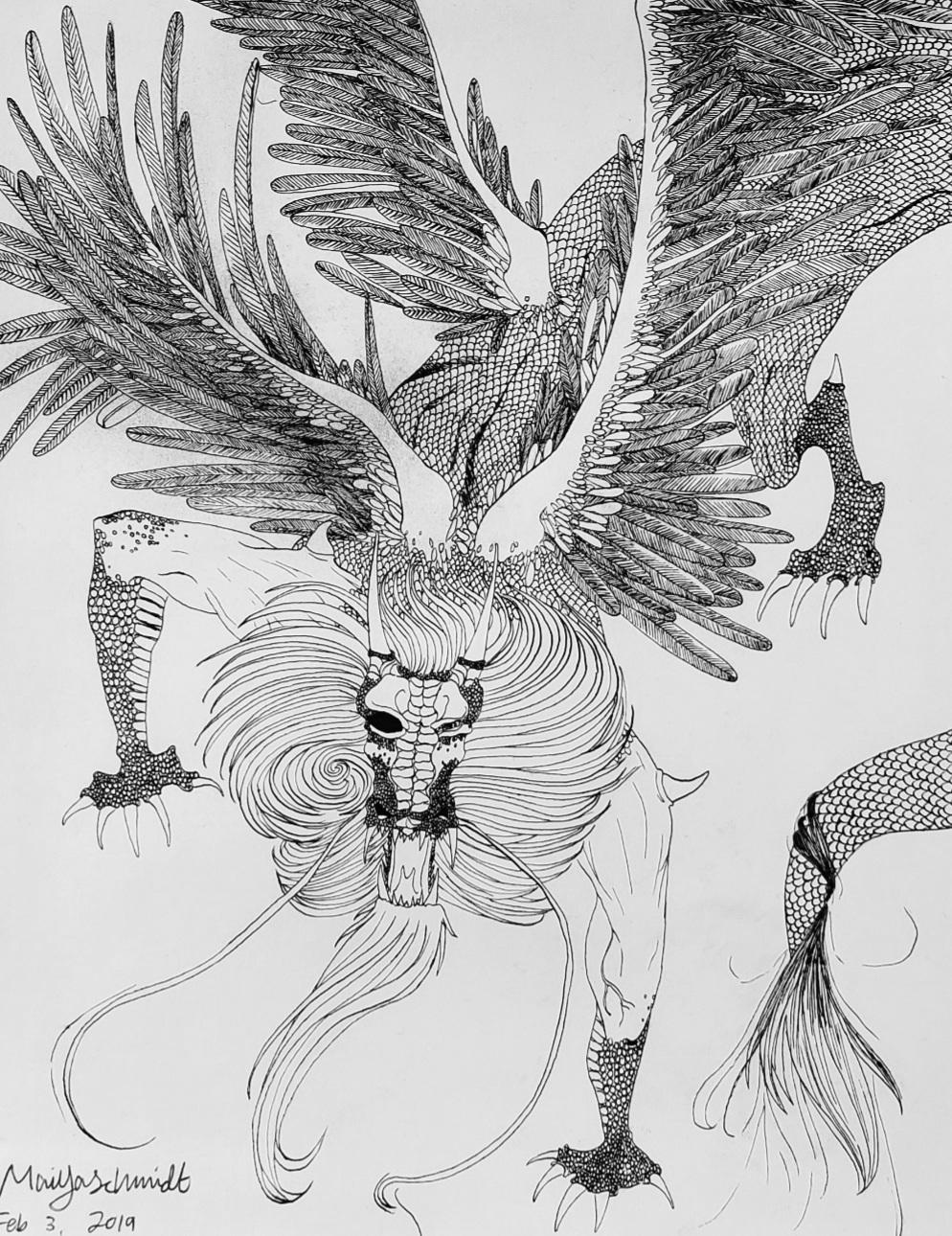
Tudor Sigmund
For those of you who may not know, I love sports. I grew up playing them, trying to make it big one day (that didn’t really work out, but it’s okay). I grew up watching them, admiring the passion and dedication of each athlete and seeing how they gave it their all. For me, sports introduced me to what it meant to be Canadian. Having immigrated to Canada when I was young, I learned of the passion and dedication that we have towards athletes that come from this country. I saw the highs of winning the Gold Medal in Ice Hockey on home soil, winning Gold in Women’s Football at the Olympics, and even qualifying for the World Cup. Canadians have a proud history of supporting our “home-grown” athletes. So if you’re new here, or if you’ve been around for a while, here’s a list of Canadian legends I think you should know about.
Bilodeau
Alexandre Bilodeau is a freestyle skier from Rosemere, Quebec and the first
The whole nation erupted. Alex became the talk of the nation the next day, when everyone would talk about this truly remarkable moment in Canadian sports history.
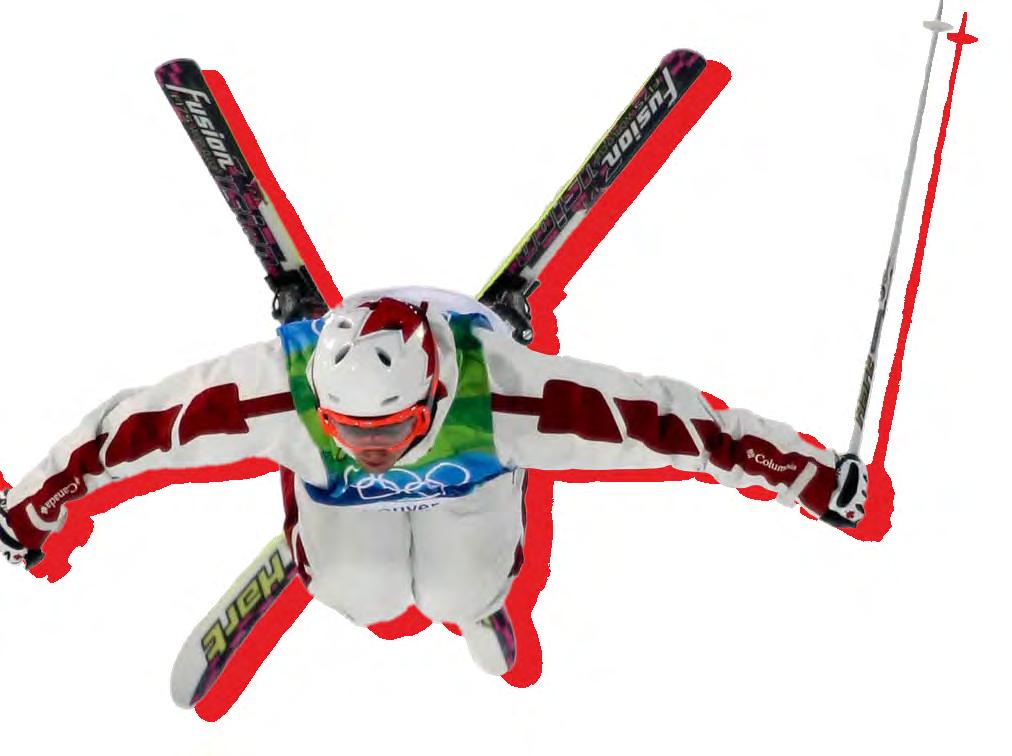
soil? It was pure elation to see Alex lay down two outstanding runs in the final, edging out Dale Begg-Smith of Australia by just 0.17 of a point— 26.75 to 26.58.
Georges St-Pierre (GSP) is a former professional mixed martial artist from Montreal, Quebec. GSP is regarded as one of the greatest fighters in Mixed
GSP has a 26-2 record in the Ultimate Fighting Championship (UFC), where he holds many records such as the landed in UFC 90, and the second strikes landed However, it is not that define GSP, but mentality.
GSP came from a karate background. This made him incredibly modest in a sport where many athletes are considered flamboyant personalities. His personality came into play many times in the ring, staying cool and calm; however,
also won back the championship belts that he had lost in the previous fights, truly showing how committed he was to winning. GSP became the fourth fighter in UFC history to be a multidivision champion.
Christine Sinclair is a professional football (soccer) player from Burnaby, British Columbia. She was a member of the Canadian national team for 23 years where she made 331 appearances.
Christine holds multiple impressive individual stats such as the most international goals by a footballer (female or male), with 190, and is one of only three players to score at five editions of the World Cup. While Christine is an impressive individual footballer, as captain for Team Canada, she accomplished more than anyone
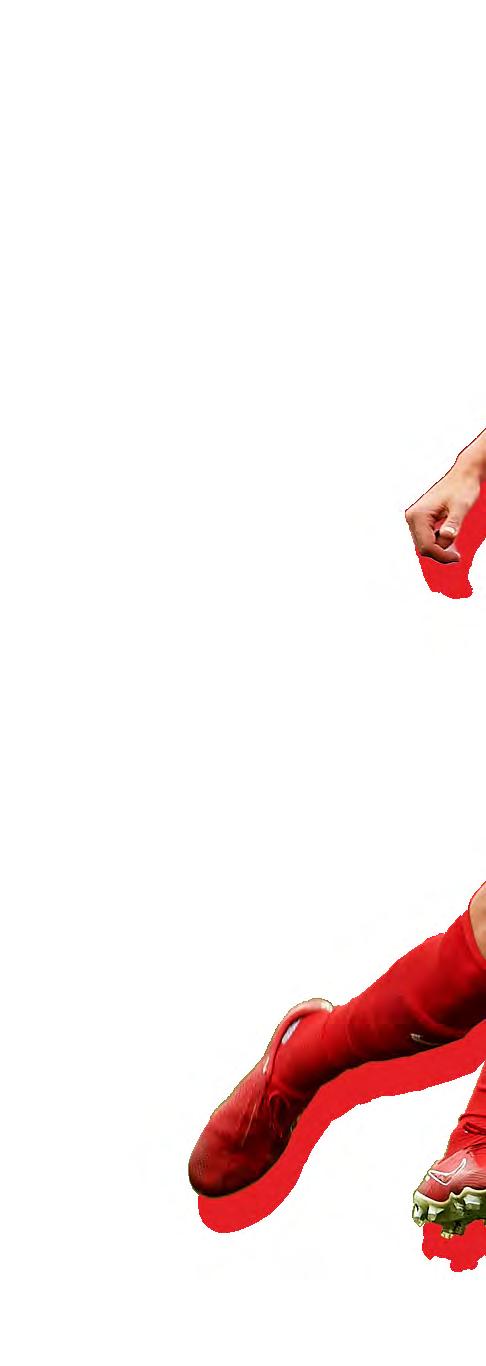
loss, and what this means is that every opponent he’d lost to in his UFC career was somebody he went on to beat at a later date. In both cases where this happened, GSP
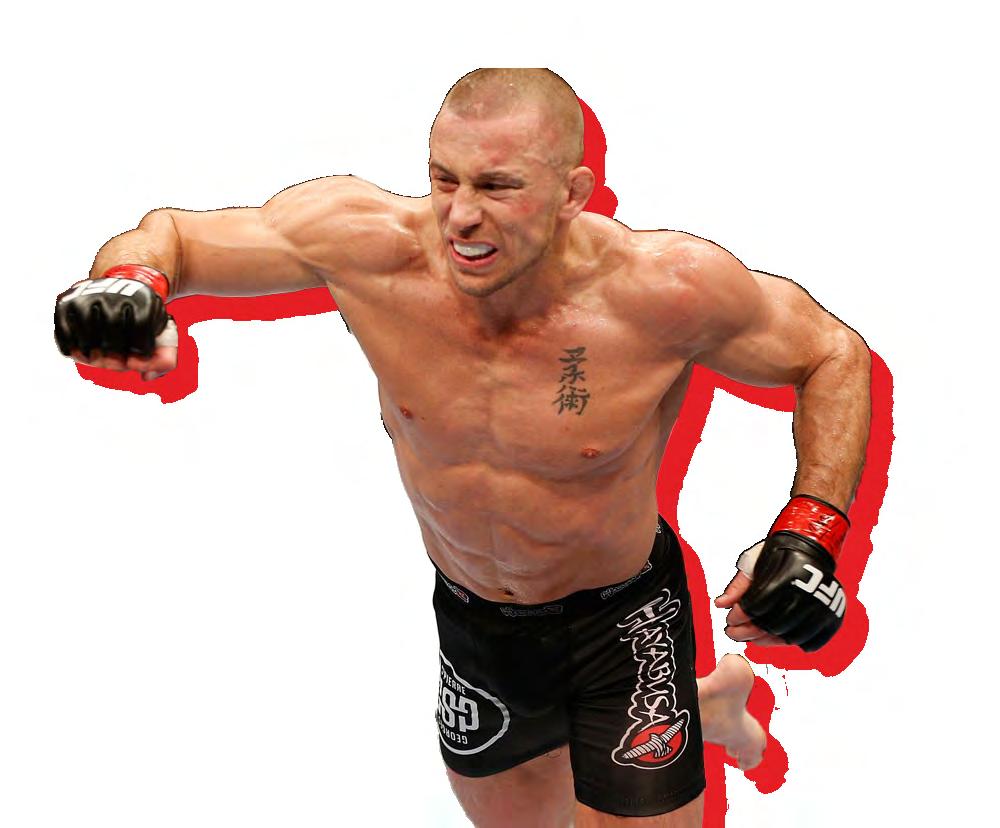
football. We don’t watch it the same way we do with sports such as hockey, baseball
However, what the Canadian women’s football achieved in the 2020 Olympics was something we could
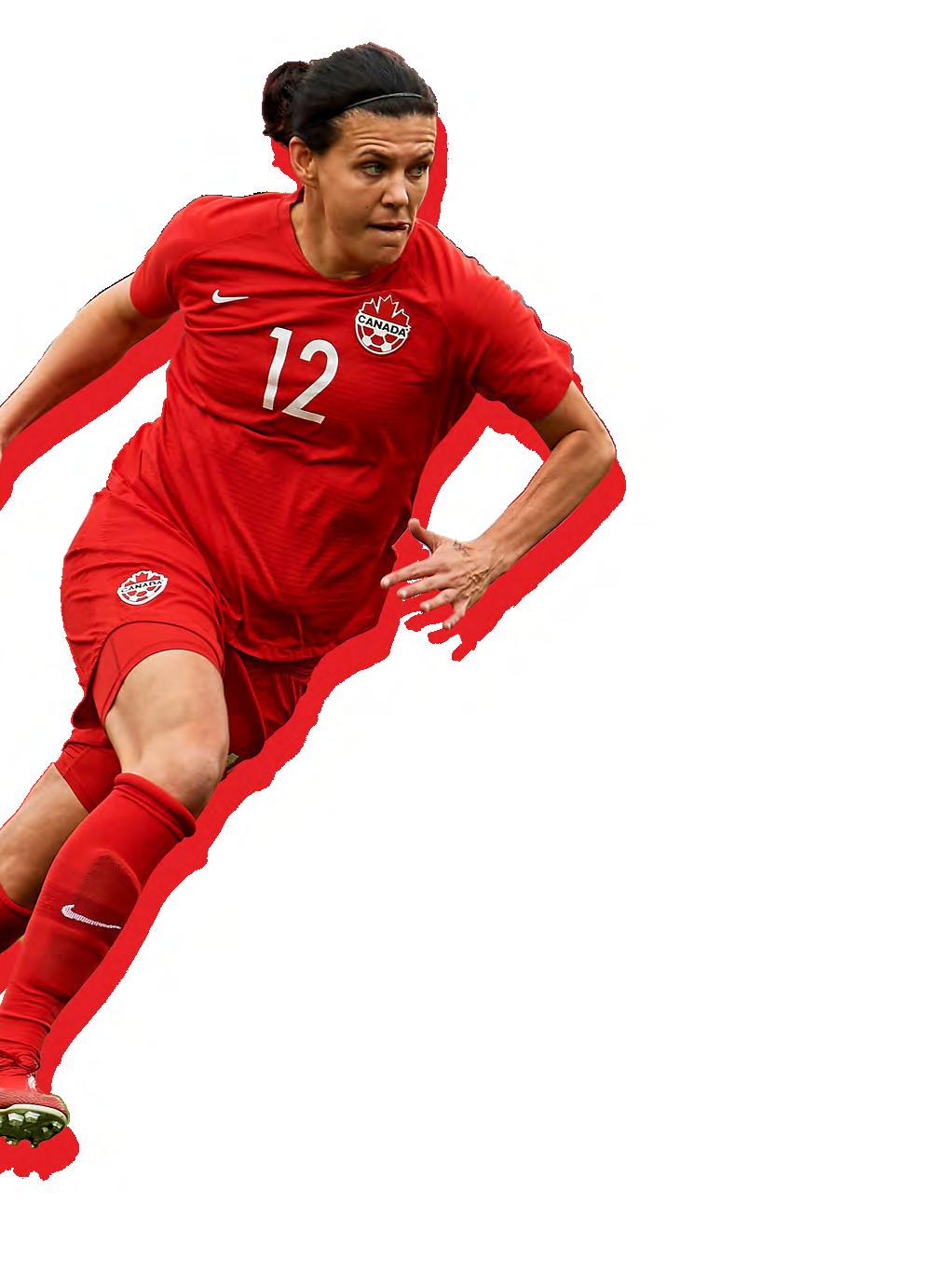
to Christine.
Wayne Gretzky is a former professional ice hockey player from Brantford, Ontario. Notably, Wayne Gretzky was the captain of the Canadian national team and the Edmonton Oilers.
There is a reason that Wayne Gretzky is known as the “The Great One”. In an era where the discussion of who the greatest of all time (GOAT) is becomes more and more divisive, Wayne Gretzky has undoubtedly
been the GOAT of hockey for the last 40 years. To show how clear Gretzky is of second place, we have to look at the
Gretzky holds the record for the most goals all time with 894, ahead of Alex Ovechkin by 41 goals. He also holds the record for most assists all-time with 1963, ahead of Ron Francis by 714 assists. In hockey, there exists a stat known as points, which is the sum of goals and assists. Gretzky, being the all-time point scorer, has a total of 2857 points. If you took away all of his goals, all 894 of them, do you know where he’d be on the list? HE’D STILL BE AT THE TOP! Jaromir Jagr, the second highest point scorer of all time has a total of 1921 POINTS. Gretzky has 42 more ASSISTS than Jagr has POINTS! Ridiculous. He’s also a nine-time Hart trophy winner for being the NHL’s most valuable player. A four-time Stanley Cup champion, Gretzky is the GOAT of hockey and there is no one close to him.

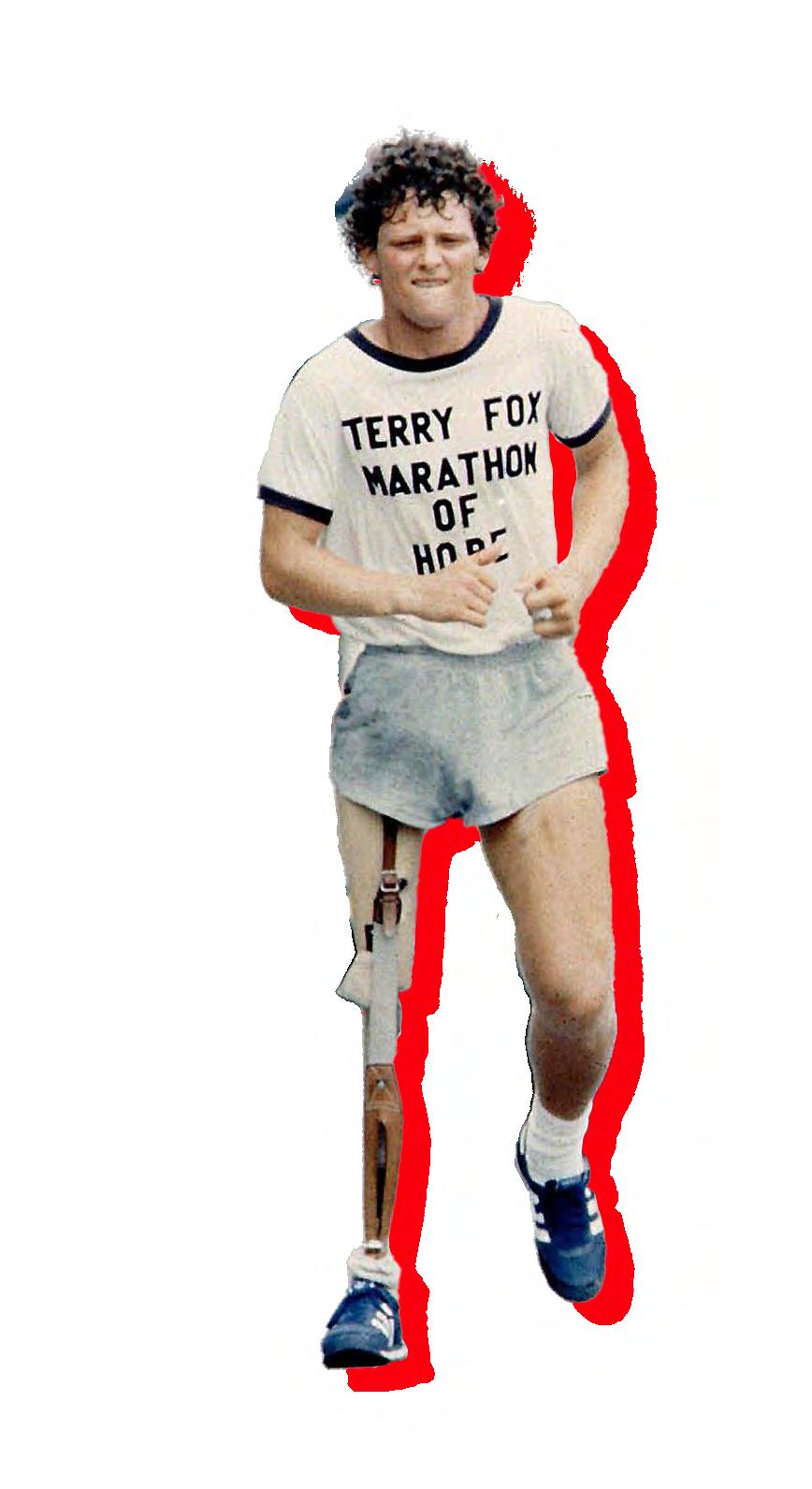
no choice but to go through chemotherapy and have his leg amputated. Living through the experience of cancer treatment in Canada, he realized how poorly funded it was and how bad the conditions were for patients. He decided to do his best in trying to make a change. He set off to run the Marathon of Hope, a cross-Canada run from the Atlantic Ocean in St John’s, Newfoundland to the Pacific Ocean in Victoria, British Columbia. Running the equivalent of a marathon (42 km) a day, Terry made his way across the country trying to raise $1 for every Canadian at the time. His run was stopped short outside of Thunder Bay, Ontario when his cancer had gotten worse, reaching his lungs and forcing him to stop his marathon after 143 days and 5,373 km. He died nine months later at the age of 22.
Terry Fox wasn’t the most successful athlete, he wasn’t a professional athlete. However, his legacy lives on forever. Annually, millions of people in more than 60 countries participate in the Terry Fox Run, the largest one-day fundraiser for cancer research in the world. This fundraiser shows children from a young age the importance of helping out the community and the difference a small action can make. Terry Fox is more than just a legend; he
Recipe
by
Ted Pinkerton
Makes 2 servings, Vegan
1 block extra firm tofu
1 cup of rice, uncooked
1 bag of frozen vegetables (personally I love ones with water chestnuts) (or 4 cups of various chopped vegetables)
5 tbsp dark soy sauce (or 6 tbsp low sodium soy sauce vegetable oil)
3 cloves minced garlic (or 3 tsp garlic powder)
1 thumb sized piece of minced ginger (or 3 tsp ginger powder)
1 tbsp sesame oil
1 tbsp sesame seeds
Instructions
1. Press the tofu for at least 10 minutes.
2. Prepare rice how you would like.
3. Either cut or tear the tofu into preferred shape.
4. Heat about 1 cm of vegetable oil in a pan over medium-high heat.
5. Add the tofu to the pan, stirring often.
6. Add a third of the soy sauce and stir. Repeat three times in one minute increments.
7. Cook tofu until it the surface is crispy and firm to the touch.
8. Remove the tofu and pour off most of the oil.
9. Add the vegetables and cook until thawed and soft over medium heat (about 5 minutes).
10. Add the ginger, garlic and remaining soy sauce, stir, and cook until fragrant.
11. Stir in the sesame oil and sesame seeds off the heat.
12. Serve tofu and vegetables with rice.




Navin Vanderwert
Skule wasn’t—isn’t—what I expected. To be more clear, I really wasn’t expecting anything at all when I decided to come here.
Everything I’d heard about university was mildly awful. I was prepared to spend four years among hordes of nameless peers, shuttling from one opaquely labeled class to another, studying in a dank basement for hours on end, and finally vomiting what I remembered onto an exam paper and forgetting it the next morning.
Much of that has a hint of truth, if not great exaggeration, but there is one way to easily escape the worst of it: just do things. Join a club, a design team, a sport, or even start your own thing— and magically, things will feel better.
A common reservation that stops people, especially F!rosh, from trying things out is the fear of commitment. My experience, gained from clubs I joined briefly before leaving and the two I’ve led myself, is that no one cares. And I mean that in the best way possible. Club leads are generally thrilled when people join, and don’t really mind if they leave. They know how busy life can be, they know that not every club is for everyone, and they expect that people will leave sometimes. From your perspective, however, the only way to find your “thing” and your community is to join a bunch of clubs and see what sticks.
Alright, fine. You’re no longer worried about the commitment. But what about time—is there enough of it for me to take part in what I want? Obviously, this depends heavily on your individual situation, but there’s always the option of doing less. Ask yourself if there’s too much going on, and if there is, you can always drop responsibilities to make it easier to manage. Secondly, I’ve found that
schoolwork has a habit of taking up as much time as you are willing to give it. That’s not to say you should leave all of it to the last second, but that you could probably do as much or as well in less time if you had to.
So what are the benefits? For one, community—every part of Skule interacts with every other, at least a little. Before you know it, you’ll start to recognize people in the hallways, in your classes, and even around the city sometimes. Small as this may seem, this goes a long way in bringing back some of the familiarity that I think is missing from a lot of people’s university experience. Another thing is confidence— everyone’s experiences are different, but for me, being an exec for and then leading a club at Skule was the first time I was given real responsibility of my own. Although that time quickly passed, I’ve found myself using the lessons I learned from that experience in my day-to-day life ever since.
No one but you can figure out what your place in Skule is, but I can tell you that you won’t find it unless you try things. For some, it’ll be a leadership position that dominates your waking hours for years, for others it’ll be a casual interest, and for some it’ll be an excuse for a social club. But whichever it may be, I guarantee your next fourplus years will be all the better for it. Sign up for whatever looks interesting, and don’t be afraid to drop it. At worst, you’ll learn what you don’t like; at best, you’ll find a home.
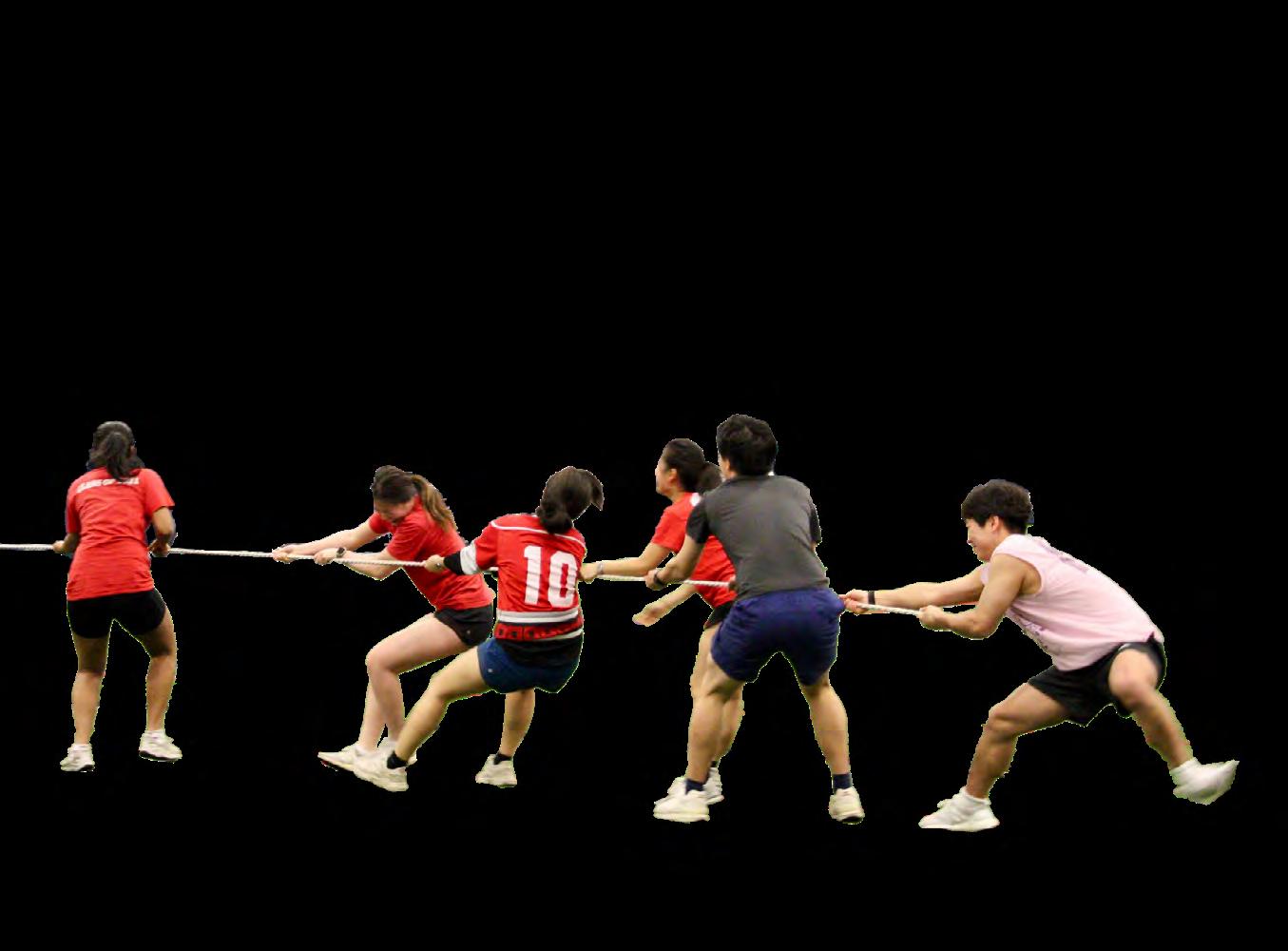
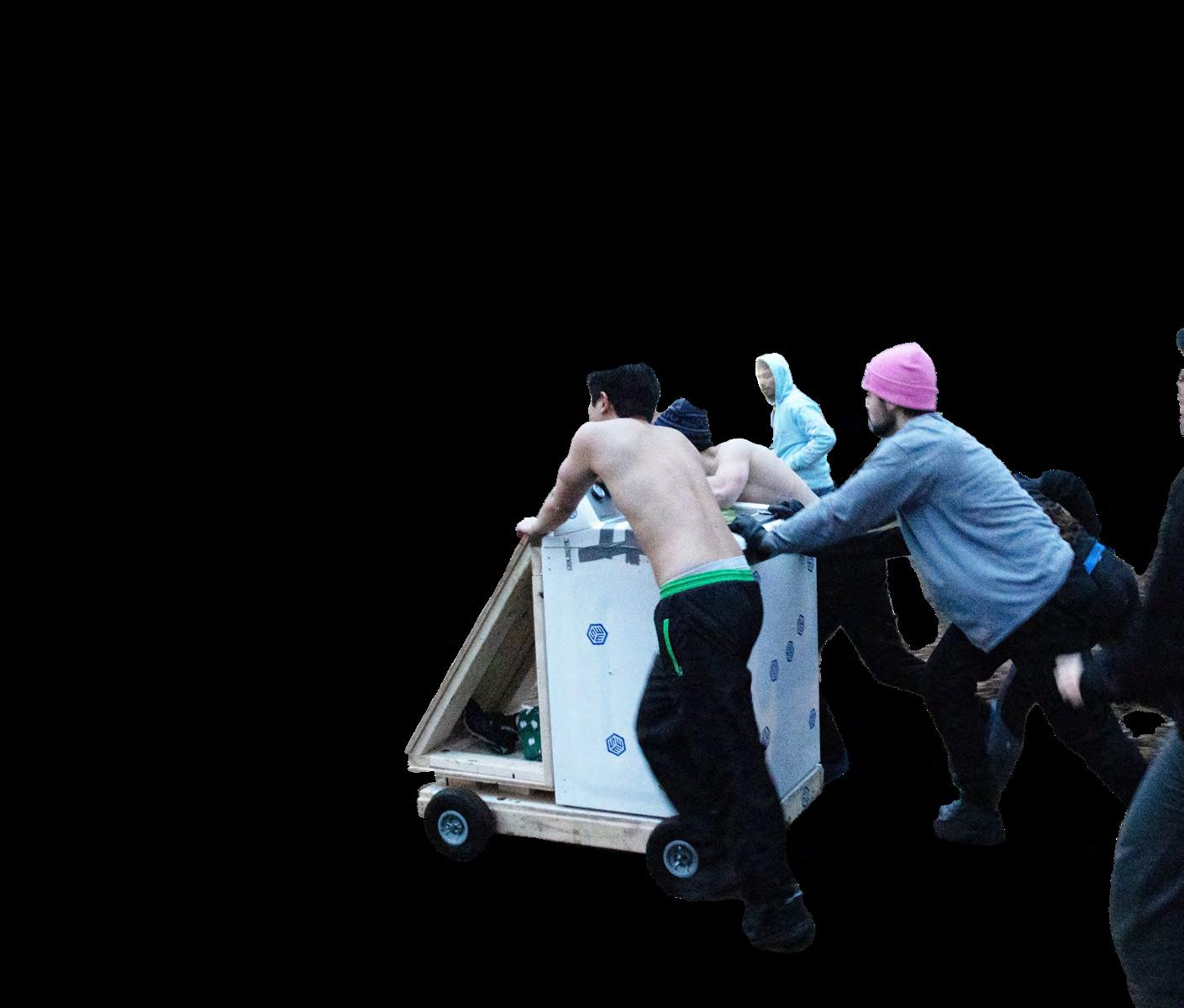

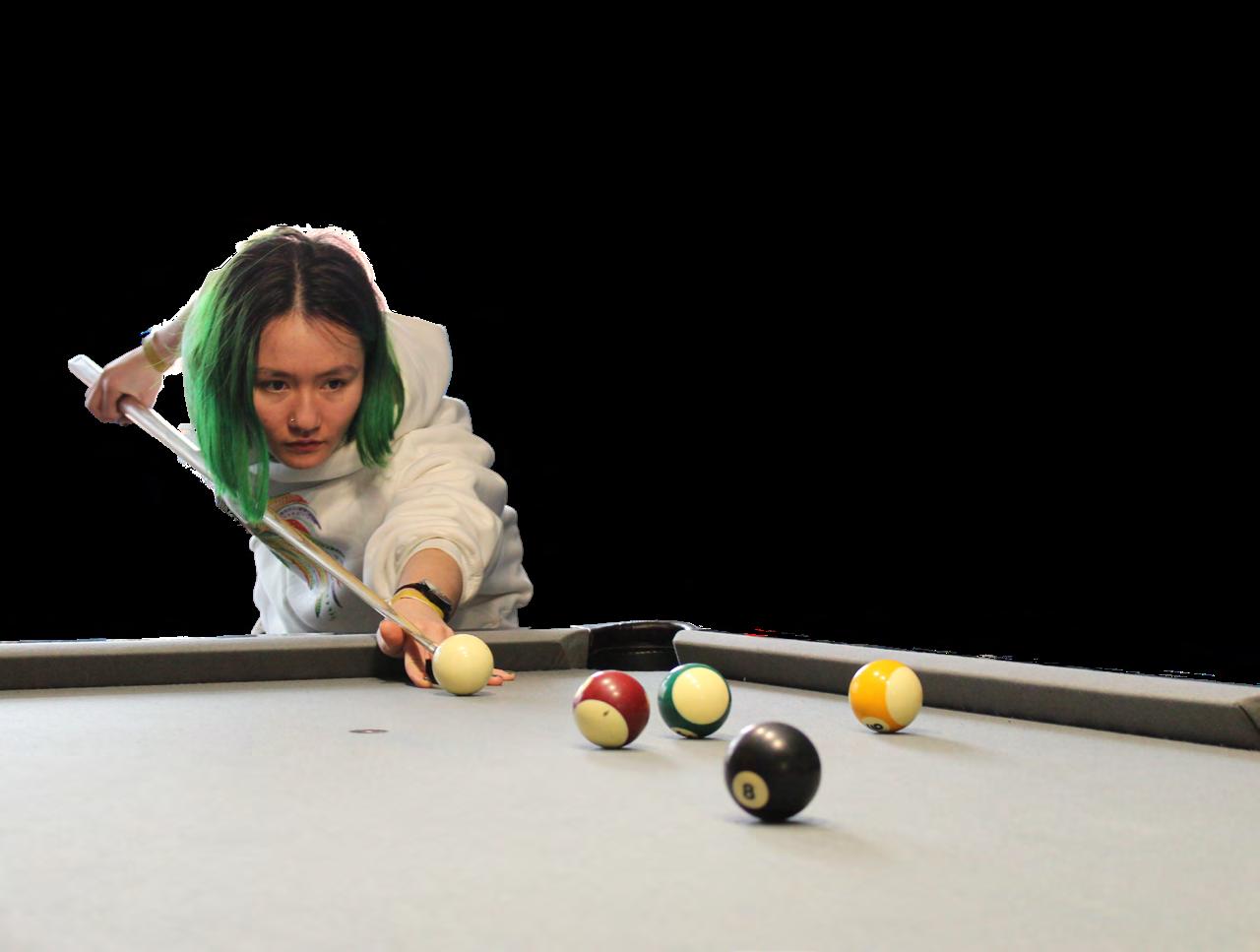
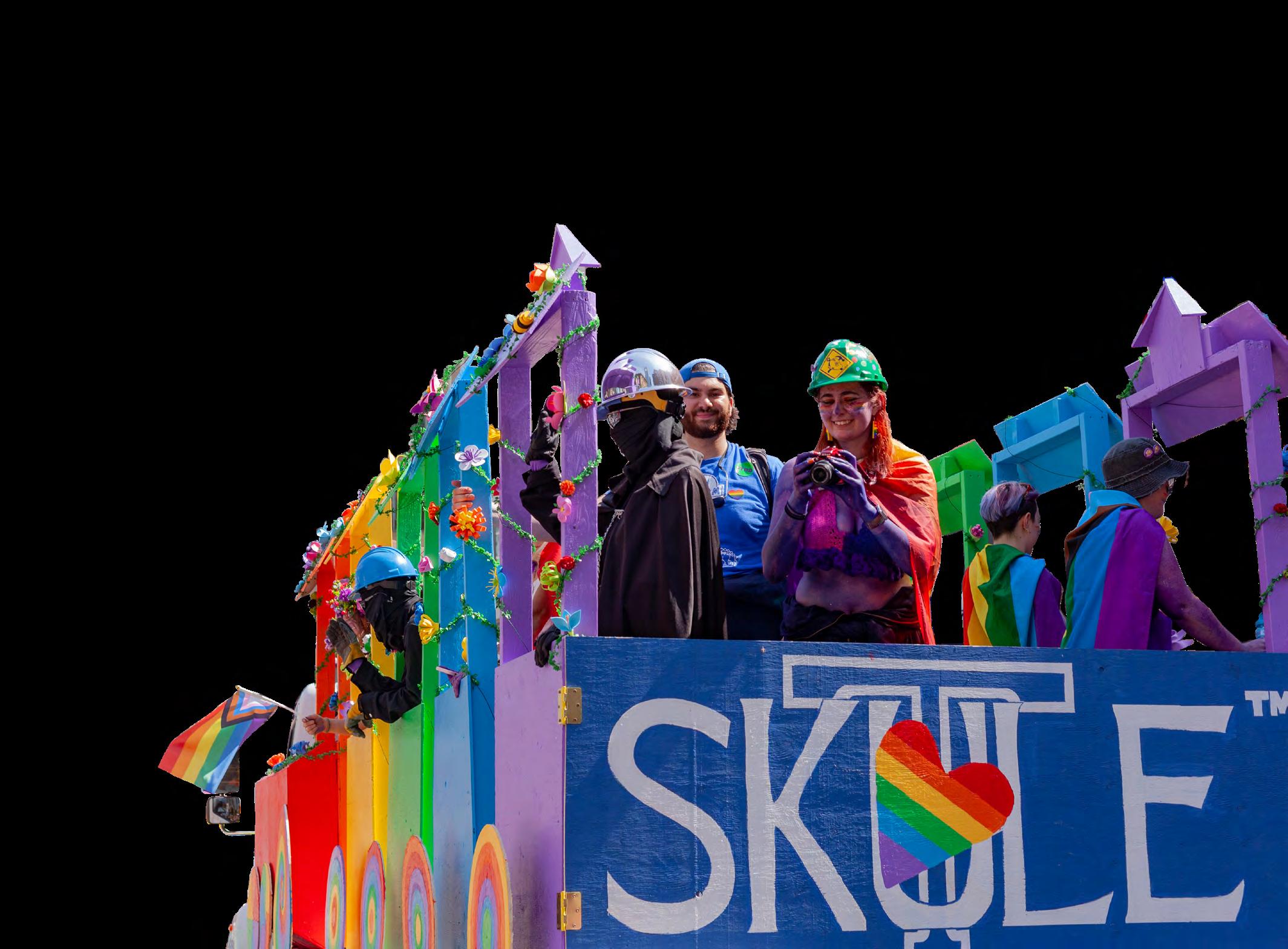


Legends of the Mystic Elders
Lily Vanderwoude & Vedant Gupta
Sharing Skule Stories
F!rosh Week Loremasters
Roleplay: It’s Not Just For Weirdos
Tobin Zheng
Unravelling History: An Interview with the Archivist
Kaija Mikes
Frida Kahlo: Mexican Artist, Mexican Legend
Alexis Kuri Garcia
Legends of Lost Transit Infrastructure
Sean Huang
5
Tudor Sigmund Skule:
Navin